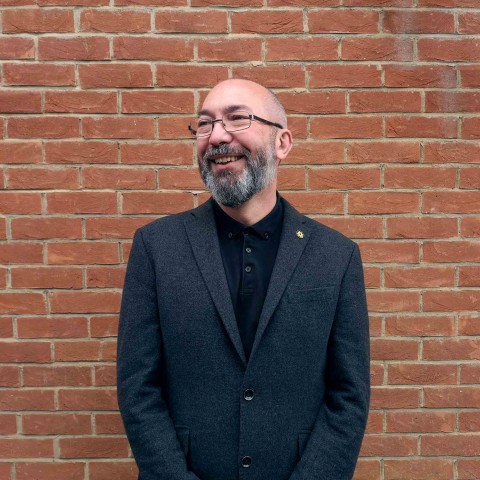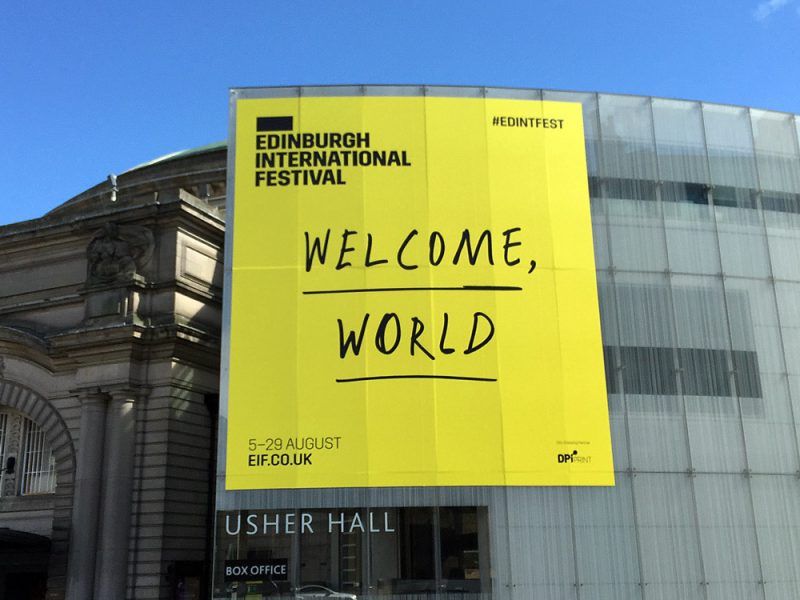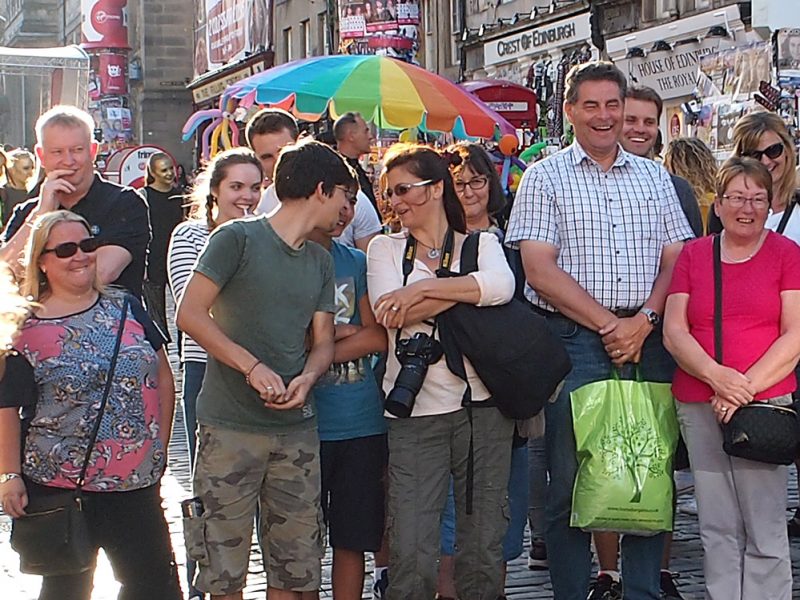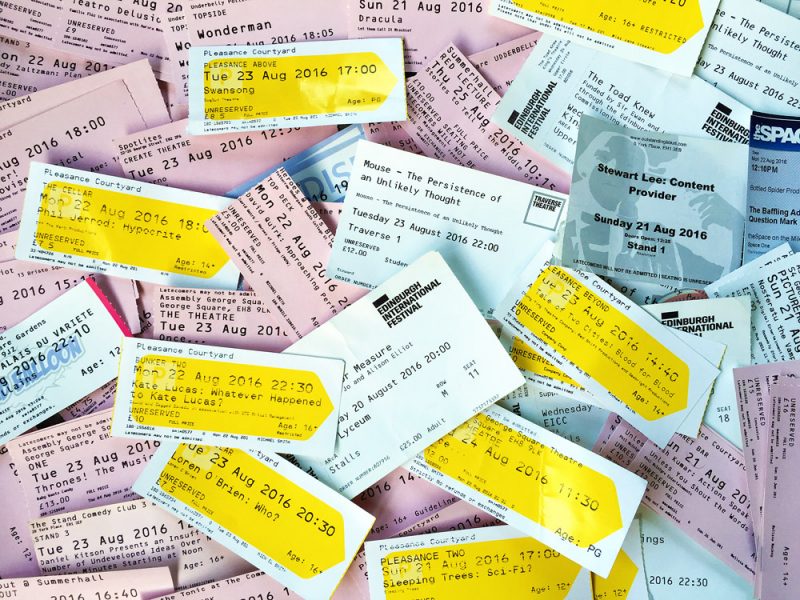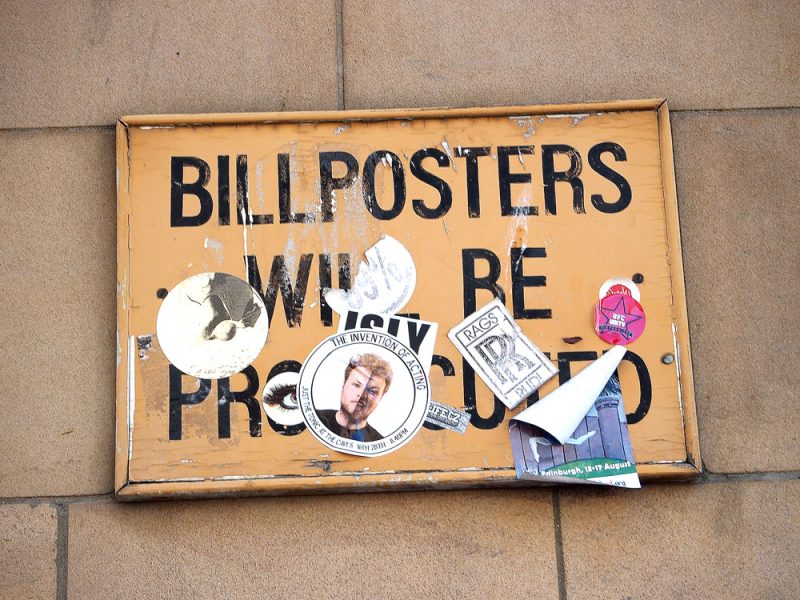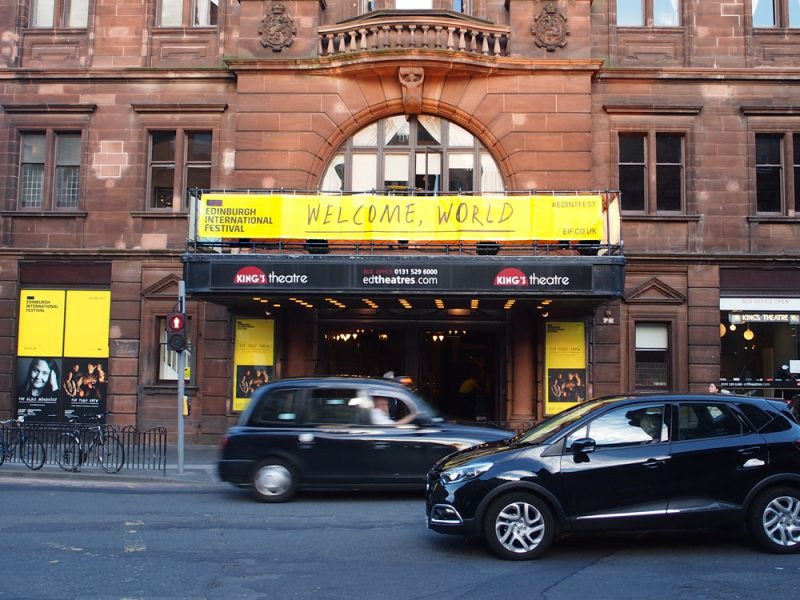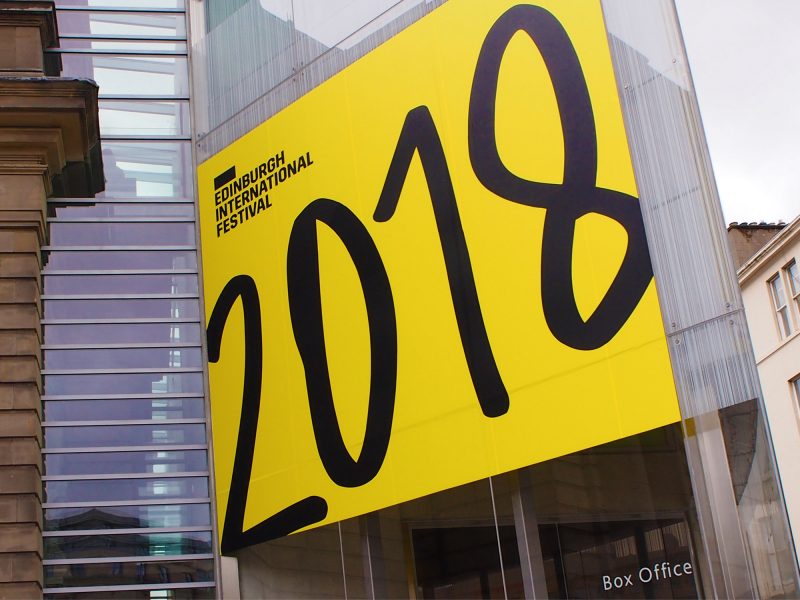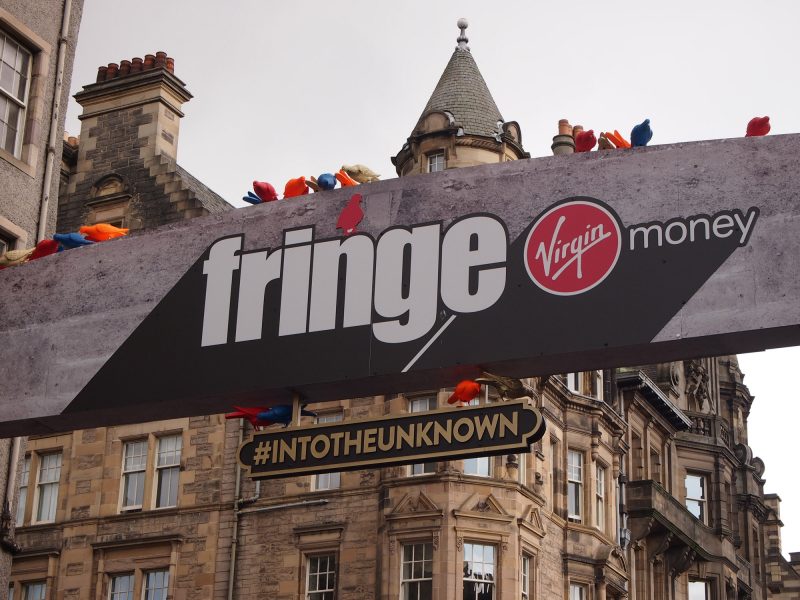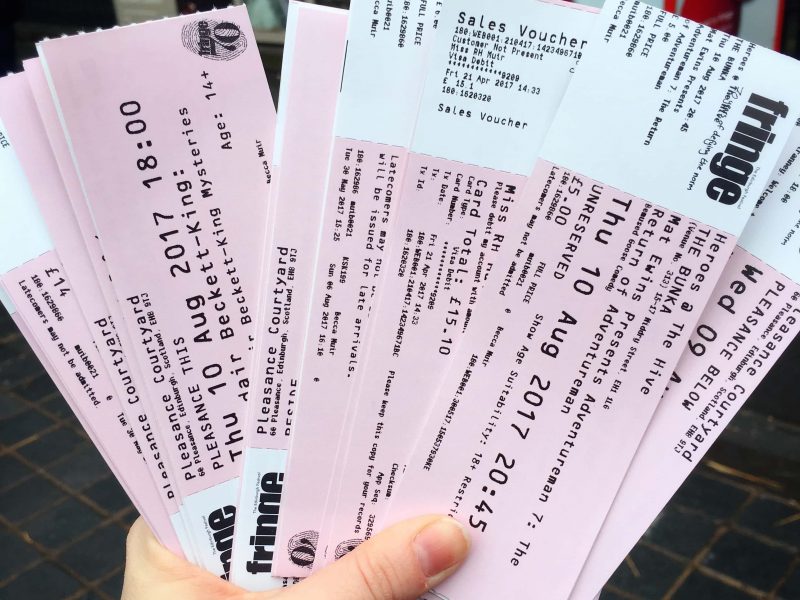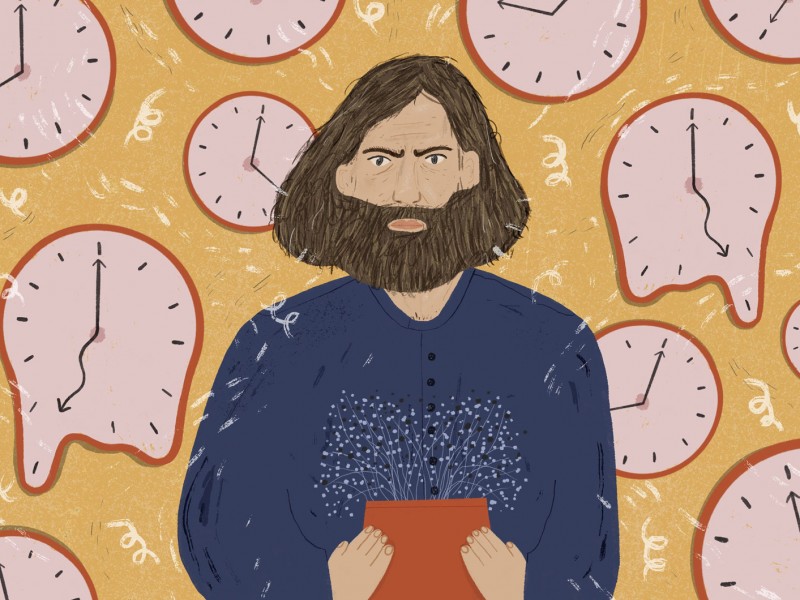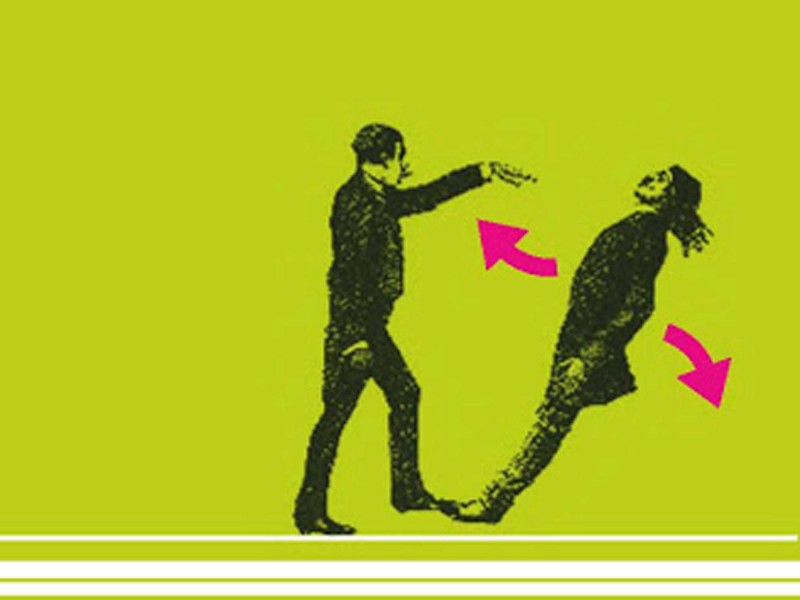I’m just back from the world’s biggest arts festival. As I often do, I’m writing some notes about my memories and experiences. Writing stuff down helps me to order my thoughts, form opinions and fix the memories. I’m doing this for me but there might be some interesting snippets for others…
Edinburgh Fringe (and Festival) 2023
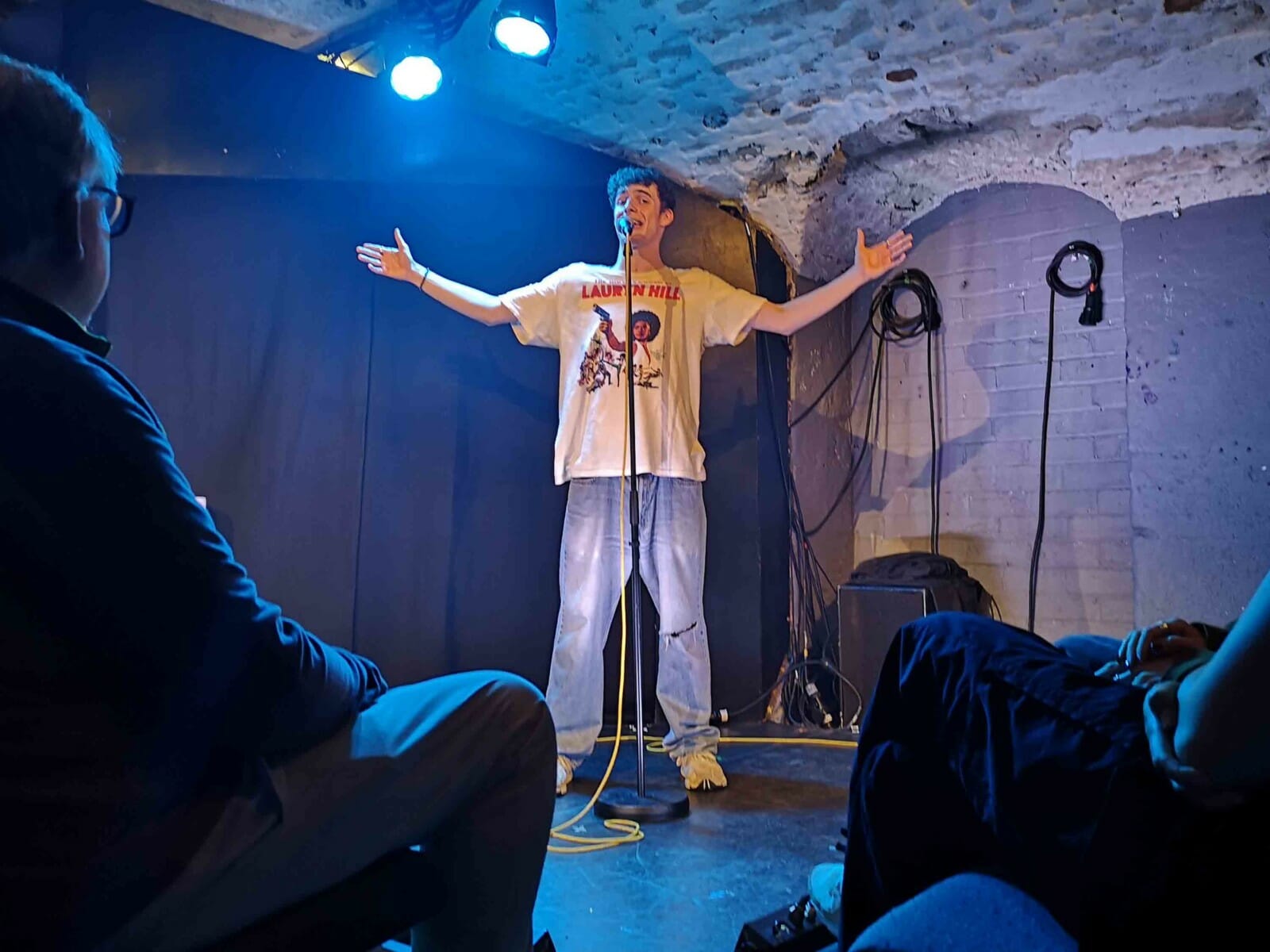
Of course, I only dipped a small toe in the vast ocean of events. I saw/experienced 42 Fringe events, one International Festival show and a couple of art installations.
My top-tip for anyone going for the first time, with family or friends: either be very laid back and expect to see only three or four shows a day, or go it alone and don’t attempt to coordinate. I went with my family and we very occasionally bumped into each other in the street and over breakfast.
I booked the majority of my tickets (sadly you don’t get actual tickets any more) a few weeks before, via some wildly complicated spreadsheets. My booking criteria were clear: no improvisation, no musicals, no juggling, and give stand-up a wide berth.
But plans went awry, shows overran and meant I missed the next, a couple were cancelled at the last minute, one was billed as ‘evocative, multi-media dance’ but snuck in a lot of juggling, and I saw several really great stand-up shows.
Rather than writing about every show, I thought I’d pick my top ten. But I really struggled to narrow it down.
So here are ten outstanding shows in the order I saw them, plus ten more brilliant shows and the rest…
 The cast of The Rite of Spring
The cast of The Rite of Spring
1. The Rite of Spring / Common Ground(s)
Pina Bausch
Edinburgh Playhouse
Part of Edinburgh International Festival
I arrived at the venue in a hot, sweaty mess (our train was delayed, I missed my first show and I’d headed to the wrong venue before having to speed-walk a mile on a clammy evening).
Common Ground(s) was just the calming buffer I needed. Two once world-leading dancers (Germaine Acogny and Malou Airaudo), now restricted by the process of ageing, performing as an elegant, tender duo. Just beautiful.
Then the interval. Hardly anyone left their seats as we watched huge metal bins of earth being tipped, levelled and raked across the stage.
The UK premiere of Pina Bausch’s much celebrated The Rite of Spring was performed in 1978 at the International Festival. This revival features an all black cast from 14 African countries.
I’ve heard Stravinsky’s work performed but this took it to the next level. Dancers clashed, male violence threatened, the company moved as one and scattered as individuals. A victim was selected and sacrificed, imploring the Gods to turn bleak Winter into the life of Spring.
As applause rang out, I (politely) pushed along my standing, clapping row and rushed up the steps of the theatre. I had minutes to get to my next play – a show about twin brothers who attempt 1000 banana slips in an hour. It was quite a gear-change and not untypical of my Fringe experience.
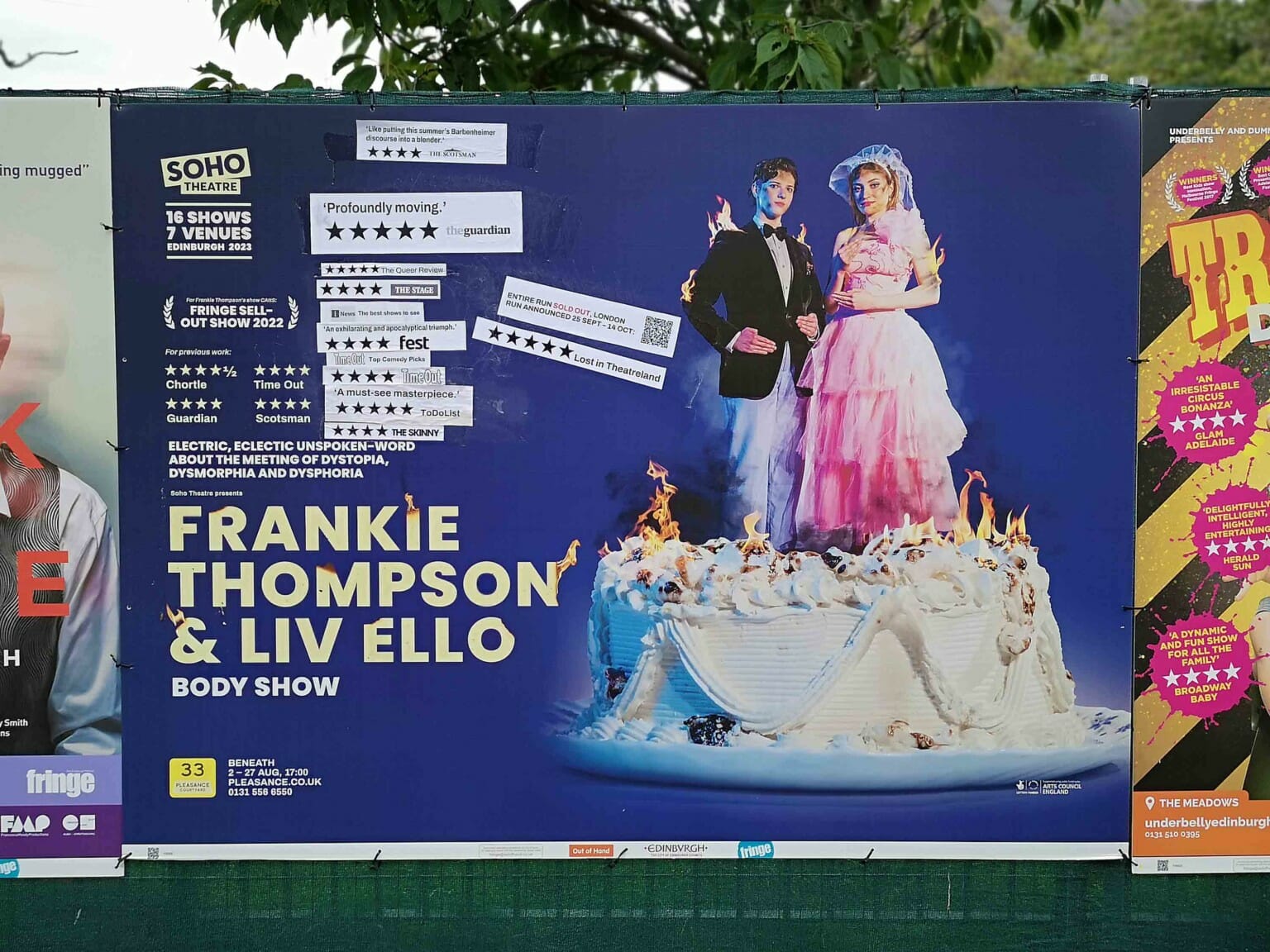 Body Show poster
Body Show poster
2. Frankie Thompson and Liv Ello: Body Show
Pleasance Courtyard – Beneath
To quote the venue’s trigger warning: this show contains themes surrounding the topics of body dysmorphia, gender dysphoria, eating disorders and death.
I’d loved the previous solo shows by this couple (Liv Ello’s Swarm, directed by Thompson, and Frankie Thompson’s CaTTs, directed by Ello). So I had high expectations. I wasn’t disappointed.
In this show, the pair explore their own relationships with body image. They first appear as the plastic cake decorations from a heteronormativity wedding. Ello as the groom is spouting nonsense and Thompson is pulling increasingly confused and angry faces.
Then the cake splits and we’re into the archival video footage, pop-culture references and whip-smart juxtapositions that make them a cut above the Fringe (sorry for the pun).
There’s no explicit story, we build our own narratives from our collective memory. It’s like skipping through the channels, dipping in and out of awful, damaging, clichéd opinions, dressed up as entertainment.
There’s faux Bake-off horror, Come Dine With Me memes, Andrew Tate hate, and a trip to the Twin Peak’s diner.
The real horror for me was in the clips of Lena Zavaroni, who was a child star of TV talent shows (singing creepily adult songs). I remember her on chat shows speaking about teenage anorexia and then hearing about her dying from that eating disorder. Cut to a clip of Samantha Reay on the X Factor (2004), being told by Simon, Louis and Sharon that she had a nice voice but was too fat, and that they could put her through if she went on a diet.
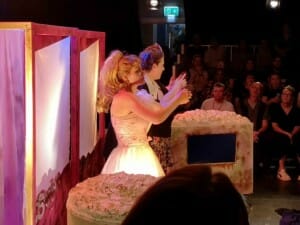
My side view of Frankie Thompson and Liv Ello
It’s a tough watch but I should add that the show is never po-faced or earnest. It’s very funny and self-aware.
My only issue was that I’d been squeezed to the end of a row at the side and so missed a lot of the impact of the videos and the pair’s lip synching. I need to see it again, from the front so I have already booked again to see them when they return to Soho Theatre at the end of September.
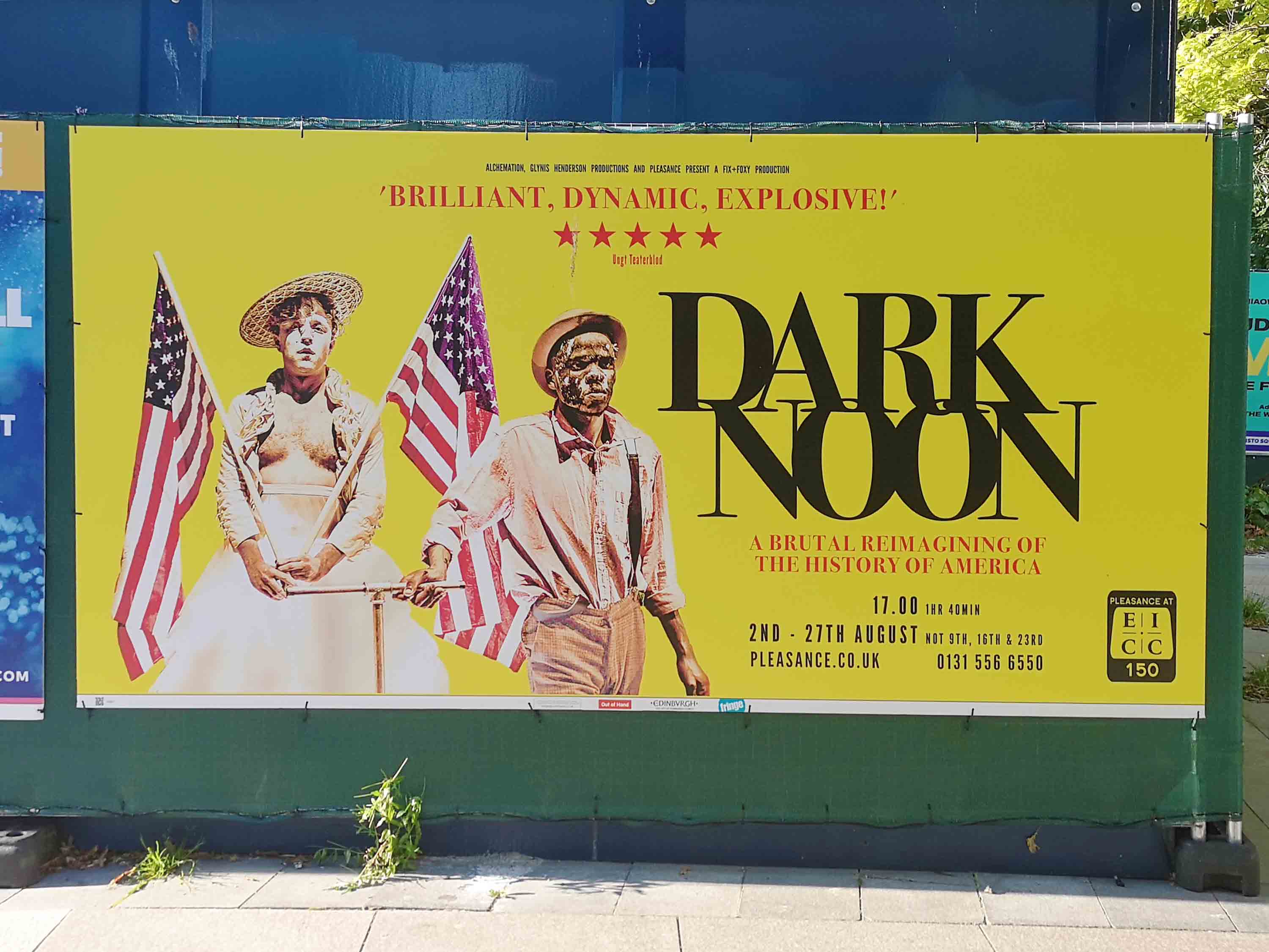 Poster for Dark Noon
Poster for Dark Noon
3. Dark Noon
Pleasance @ EICC
I booked last minute for Dark Noon. I hadn’t really known what to make of the poster. But people told me I should see it so I found a day with a gap and went along.
What struck me first was its scale. Edinburgh International Conference Centre is a big space and this show needed it.
I sat in a bank of seats looking on to ground-level space with closely seated audience rows on three sides.
The show tells the story of the colonisation of America, by Europeans. We’ve heard the story a thousand times, seemingly from every angle and every clumsy retelling.
What made this different was that the story was being told by black (and one white) South African performers, dressed in ill-fitting blonde wigs and hastily applied white-face powder.
It was told with humour and with lots of clever staging including projected interviews and cut-away sports commentary. There were laughs and pratfalls but it is a violent, bloody, messy story. There were more deaths than a Tarantino film.
We began by being reminded that in 17th Century Europe, people were dying in the streets, collapsing through hunger with flies swarming around their bloated faces, or struck down with cholera, typhoid and diphtheria.
People sold everything they owned to pay for passage on ships to escape the poverty and find a new world. The majority died on the voyages and many died of starvation or exposure when they arrived, or were refused entry due to their ill health or the wrong religious belief.
We watched the men journeying West and the land-grab that displaced the First Nation people. We witnessed the greed of the gold rush and the violence that made gun ownership feel a necessity.
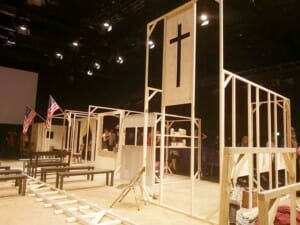
The Dark Noon set, constructed before our eyes.
As the show progresses, we literally watch the metaphor of modern America being built before us. From a wide open plain stage, shops, bars, prisons and churches are gradually constructed and populated, with a rail track laid through the centre.
Audience members were brought into the action to populate the church or dance with the cowboys. But the fun soon stopped when the best dancers were auctioned into slavery. The laughter fell away as the bidding began.
It’s not a simple, linear story. Danish director Tue Biering and co-director Nhlanhla Mahlangu do a brilliant job of letting us draw our own parallels between the continents and the ages, and in showing us that the world’s most powerful nation is built on such violent and fearful collective memories.
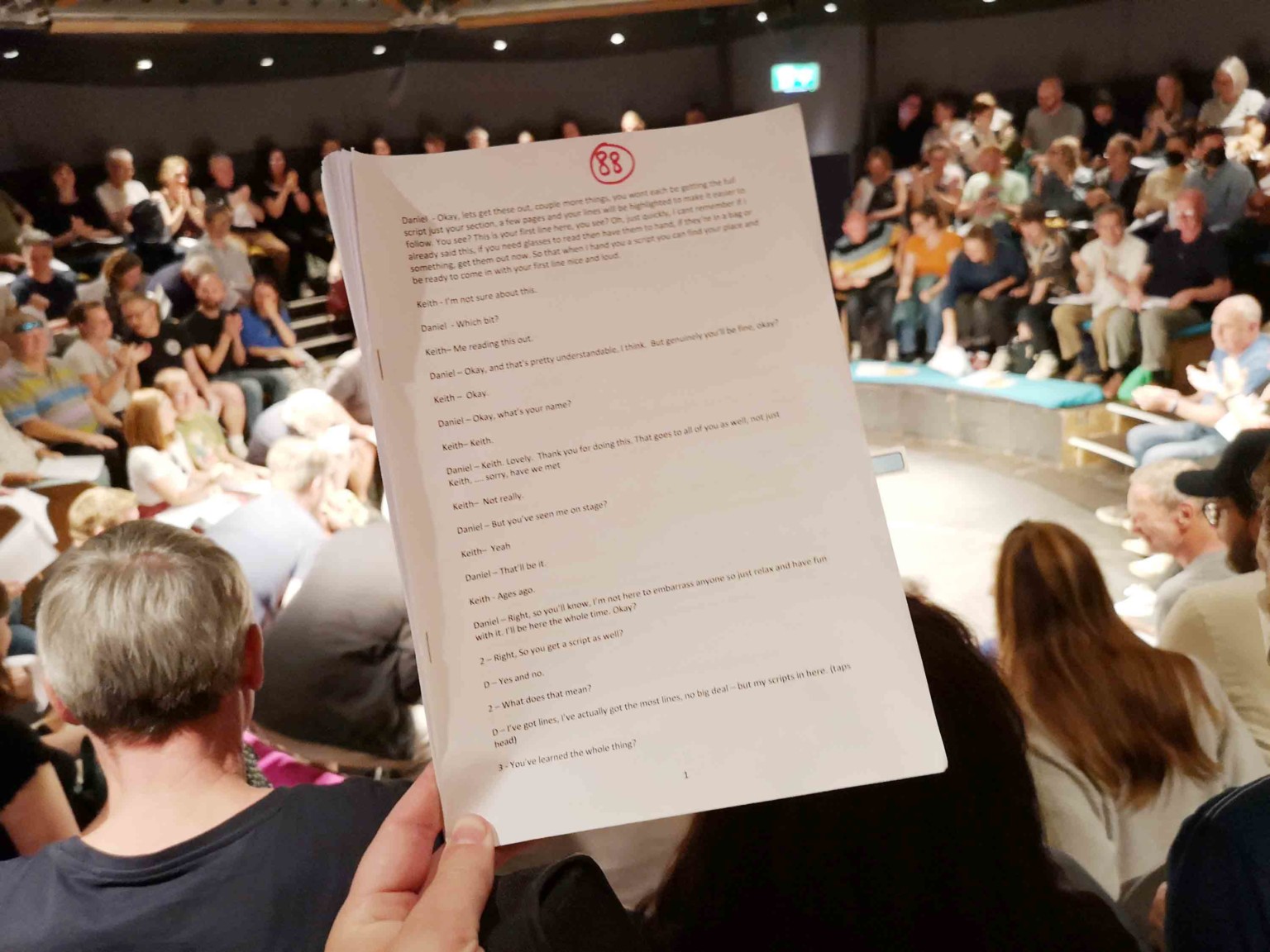 My copy of the First Thing script
My copy of the First Thing script
5. Daniel Kitson: First Thing
Summerhall – Roundabout
As often seems to be the case, Daniel Kitson had booked himself a slot long before coming up with an idea for the show he was going to perform.
He loves an awkward time slot that allows him to get on with the rest of his day. So it was no big surprise when he announced he was doing 10am in the Paines Plough Roundabout at Summerhall.
We booked very early because we knew it would quickly sell out. And by we I mean all of my family (and four of our friends who were all there for the Fringe). It was the only show where we all managed to be together.
Kitson appeared with a couple of carrier bags, stuffed with scripts. He handed them out to the audience, 170+ of us.
I got number 88 which thankfully had only one line – “as in the police”. Which was a good job as I even fluffed that.
Actually, I found the whole experience very stressful, with flashbacks to schooldays, being asked to read aloud and ridiculed by men who should have known better.
Other than that, the show was just wonderful. Actually the show never really started, the script was about handing out the script, about the audience’s attitudes, about how much we all like Daniel Kitson, and why we were there at 10am in a tent.
I’ve seen Kitson many times before, as had most people there. It was a running joke through the script.
As always, the writing and the pacing were masterful.
What was different was quite how relaxed Kitson was. I’ve seen him very stressed, especially in his constructed shows. I’ve witnessed him single out and pull apart any audience member who didn’t behave as he wanted. It was funny for us others but sometimes very awkward and confrontational (that was another returning gag).
But here he was laughing and joking and enjoying the spontaneity of the occasion, riffing off the errors and supporting those who missed their cues because they were so focused on the story– “would it hurt any of you pricks to be that invested?”
I wish my teachers had made such a dramatic turnaround.
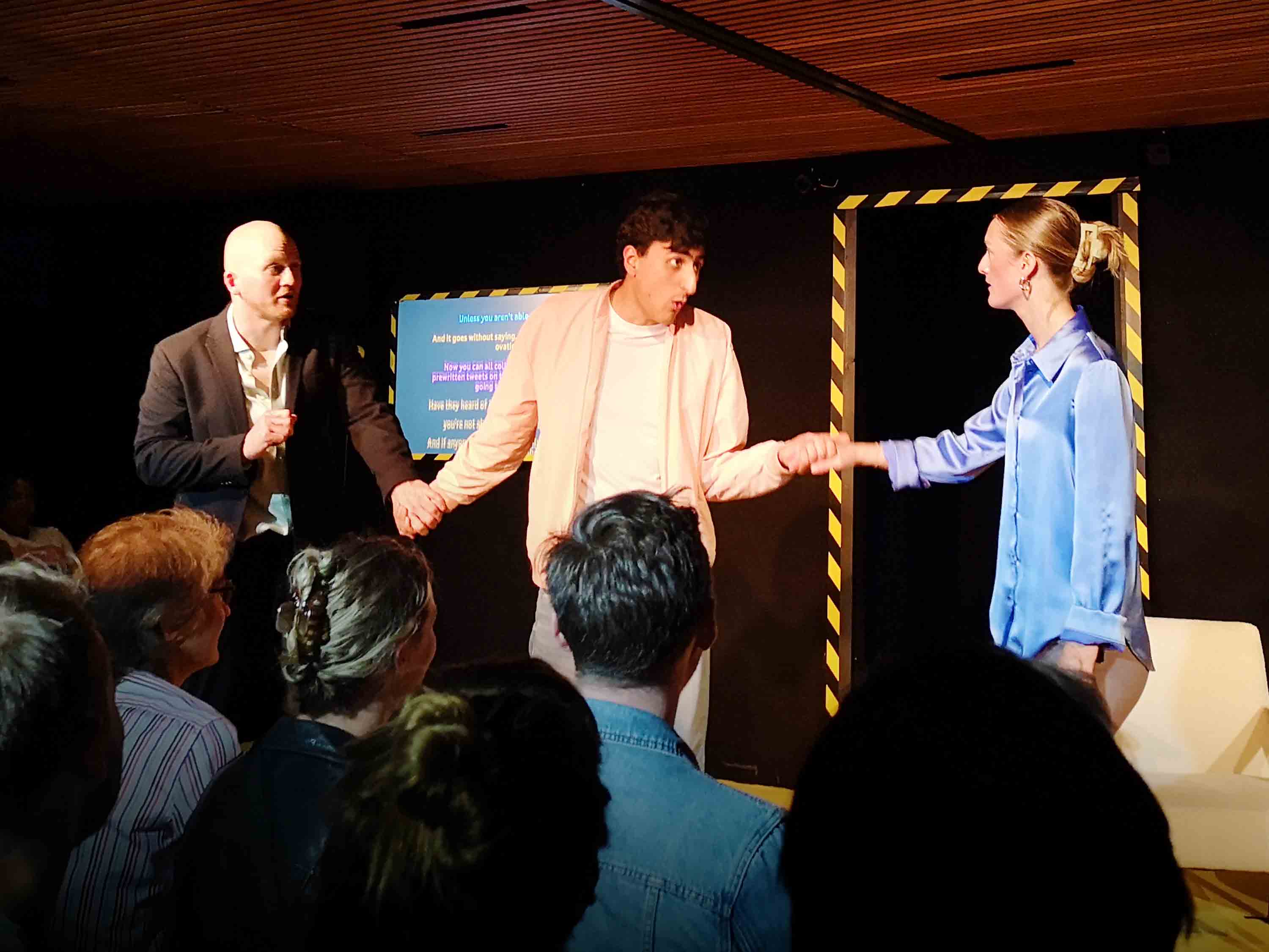 Writer/Performers: Samuel Brewer, Aarian Mehrabani and Chloe Palmer
Writer/Performers: Samuel Brewer, Aarian Mehrabani and Chloe Palmer
5. It’s a Motherf**king Pleasure
FlawBored
Underbelly, Bristo Square – Fresian
This show has been doing the rounds in London for a while. I’ve avoided it because I didn’t understand what it was about and the blurb used to talk about corporate buzzwords and exploitation (it’s changed now).
But I was won over by the sweary title and the amazing reviews.
They were right. This is a very clever, very funny show about disability and ableism (and sexism and racism) and whatever the right term is for able-guilt.
Three performers, two registered blind men (one Iranian British, the other bald and Australian) and one sighted woman take to the stage and begin explaining their set up, and why they need hazard tape to mark the edges of the stage, and why they are using captioning.
They do the performative thing where people describe how they look, using terms that mean a lot to sighted people but are presumably next to useless for people who have little idea what a blue blouse or salmon pink jacket mean.
Then they start going to extremes. They tell us that one of the audience is hard of hearing and so they shout the words at them, another needs more light so a spotlight is shone on them.
There’s a story in there somewhere, where two characters are running a PR agency, while the other, a blind-influencer, is convinced to front all sorts of enhanced experiences for the sighted community to feel the intensity of a non-sighted world.
But, as they point out, it’s difficult to satirise a world where exactly those sorts of ‘immersive experiences’ already exist.
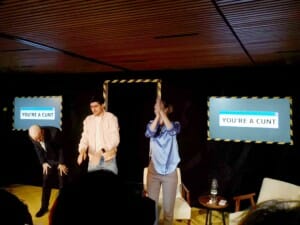
My favourite gags were from the interplay with the captioner. I’ve seen jokes like that before but never as clever, funny and well timed as these.
At the end we were told we were now allies and invited to clap. If we didn’t then we were… well I’ll let the image (and the alt tag) above let you know.
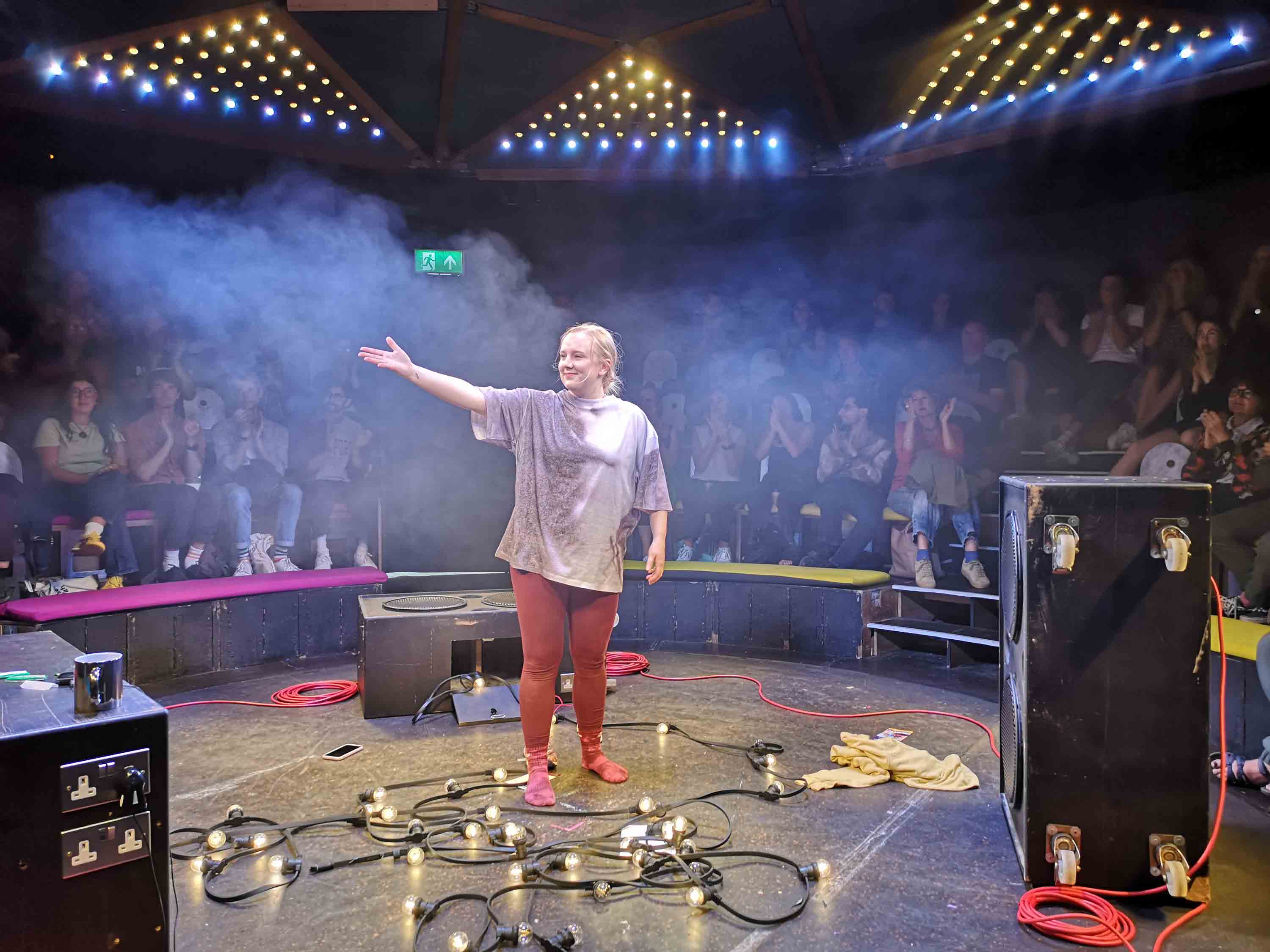 Performer Alexa Davies in Lady Dealer
Performer Alexa Davies in Lady Dealer
6. Lady Dealer
Summerhall – Roundabout
Lady Dealer (written by Martha Watson Allpress) is a fast paced poem. We know it is because its protagonist tells us so and because it rhymes until it doesn’t and then dips in and out of rhythm.
Aptly name Charly was the clever one at her South East London school. She got in to the big University, yes, that one. But she was overwhelmed, poor and betrayed by her accent and manners, All the double-barrelled well-to-dos assumed she was a dealer so that’s what she became.
She’s good at it, she knows the score.
She’s got two phones. At first the idea was that one was for dealing the other for personal. But the worlds quickly fused together.
Her iPhone rings – ‘go for Lady D…, of mum, hello’. Her mum’s the only one to call her for anything but drugs, and she only calls to talk about herself.
Charly was in love once, we know she still is even if she tells us otherwise. Now Clo has returned to the other side of the tracks, leaving Charly stranded and alone, in her late twenties, trapped in her flat, fixed in a routine that starts each day with two spoons of instant coffee in a mug.
We meet her on a day when the power goes out. Like her, her phones are run-down, out of energy. Without any calls she’s lost for what to do.
It could be a bleak story but Alexa Davies’ performance is fully charged and engaging throughout. The Fringe is filled with yoga bodies, twisting and sliding their way between mood transitions. Davies’ owns her flat round stage, dressed in clothes that ‘scream hangover’. She hauls herself, belly first, up onto an oversized speaker, moaning at us for not helping.
Like a real person. Not like a drama graduate pretending to be a real person. She’s utterly believable.
By the end she’s convincing herself that all is OK. I am fine, don’t worry about me, ‘I am fine, I am fine, I am fine, I am fine’. None of us believe that and neither does she.
 Rob Auton, pointing at the latecomer
Rob Auton, pointing at the latecomer
7. Rob Auton: The Rob Auton Show
Assembly Roxy – Upstairs
I’ve seen Rob Auton before but never in Edinburgh. He has become a Fringe institution, taking on a single topic and crafting an hour’s set from his observations and loose connections. His first solo Fringe show (The Yellow Show) was ten years ago. Others have included Hair, Sky, Sleep, and Faces. Last year, he turned his gaze outward to The Crowd Show.
I saw him on a Cog Night at Soho Theatre for The Time Show a couple of years ago. I enjoyed his laconic delivery and poetic, off-beat observations but not enough to tip him into my must-sees for 2023.
When a different show cancelled and I had a gap in my schedule, he felt like a safe place to spend an hour this year.
This show was in a different league.
To celebrate a decade at the Fringe, Auton has turned the subject to himself (something most comedians do within seconds of you meeting them).
The stage was laid out with the banners and props from all his previous shows but they barely get a mention.
He walked on, a sheaf of paper awkwardly tucked under one arm, joined our applause and turned it into a unionised clap. Then he taught us a chant, about punctuality and bastards, to direct at anyone who might be let in as a latecomer.
He shouts up to the stage manager, ‘are there any latecomers?’.
‘No’.
He seems genuinely disappointed and explains that he was going to apologise for our rude behaviour and tell them he understood that it can be stressful to get to a venue on time during the Fringe.
He begins his routine as a crafted poem about the human experience. He shouts that we are all looking for the genuine human experience. Then he spots a latecomer sneaking in, gleefully gets us to do the chant, doesn’t add the apology, and repeats the start of his poem in double-time so they catch up.
It’s a perfect, unique start to a live show. Or maybe it’s all contrived – who cares?
In the hour that follows we hear about Rob’s loving parents, about his circumcision (including a routine that he’s left in even though he’s now realised how unusual his experience was) about his first ‘outside of school’ girlfriend, and about becoming the crab-cake king of his town.
He tells us that he doesn’t really understand himself or why he’s like he is and he’s amazed to have found someone who gets him enough to be his new wife.
It’s a beautifully tender show about fleeting human experiences, plus a few killer jokes (that reminded me of the observational material of the great Emo Philips).
I’m a bit scared to see it again when he brings it to London. I don’t want to know if the ad-libbing is real or not, or maybe I do. I’m not really sure of myself.
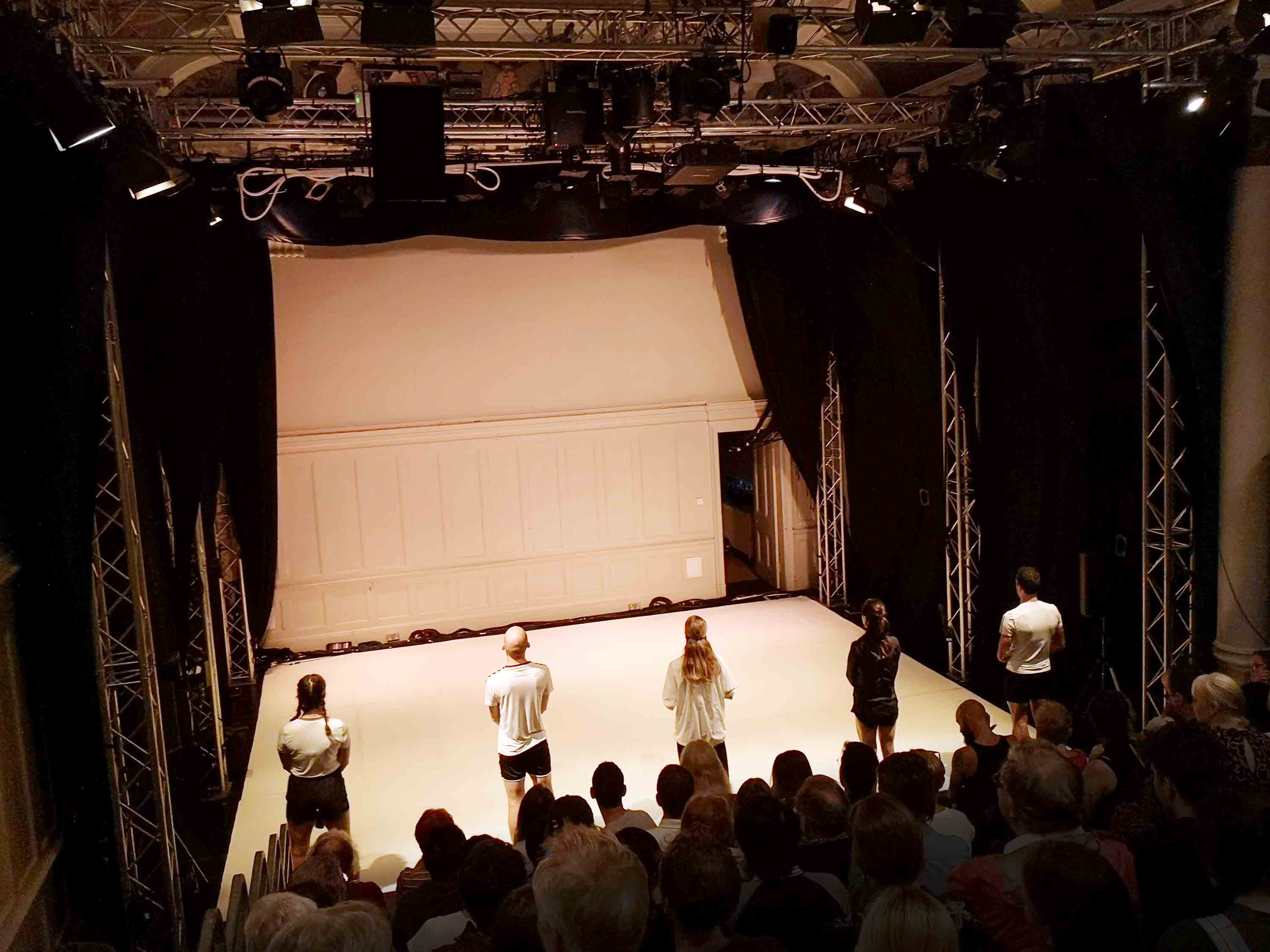 Five performers, prepare to perform MASS EFFECT at Summerhall
Five performers, prepare to perform MASS EFFECT at Summerhall
8. MASS EFFECT
HIMHERANDIT Productions
Summerhall
HIMHERANDIT (who seem to love capital letters) are led by Andreas Constantinou. They are apparently one of Denmark’s leading queer performance companies.
Their show MASS EFFECT, might be the most moving thing I’ve ever seen at the Fringe. I bumped into someone I knew on the way out and could barely speak to them because I was so affected by it all.
Five dancers take to the small square stage, dressed in loose fitting gym-wear. They begin some light movement, jogging on the spot, exchanging laughs and winks with the audience. There’s some chasing as if they are playing tag and some prancing like horses in groups and in pairs. It’s fun and silly.
A short break and a drink of water and they are back. Now they are counting out the movements. 1 2 3, 1 2 3 4 5, 1 2, 1 2 3 4. It’s rapid, asynchronous, their shoes squeak on the dance floor. They are pounding a rhythm, their breathing heavier on the turns, like serving tennis players. One takes off their tracksuit top, another sheds their leggings.
Their speed increases, their movements loosen, they are shedding clothing to keep cool.
And the intensity is building, they are running, bouncing, spinning, shouting and only then does the music kick in. There’s sweat dripping as they form into high intensity workout groupings and then peel off into laps, most are in their underwear, one woman is topless.
Suddenly the stage is filled by more dancers (around 20 community volunteers plus, I’m guessing, the director/choreographer) who join their rhythm, and mirror their movements.
And by now all the performers are naked, and the volunteers are in a circle, clapping, whooping, encouraging. They are feeding off each other’s energy, giving the performers a second wind.
The performers are giving back, we can see them empowering the volunteers. One is in joyful tears as she throws her sports bra to the floor.
The performers are whipped into a frenzy, like shamen round a burning pyre, in unison, legs pounding, arms thrown, sweat arcing from every finger-tip. We can barely hear the music over the pounding of their feet and the intensity of their shouts. They’ve gone beyond exhaustion into a realm of ecstatic euphoria.
And then it ends.
And we clap.
And I sit in my seat, exhausted from the emotion of it all.
I wait until I’m almost the last person in the seats, wander out past the stage, catch the eye of one of the volunteers and raise my hands in a silent clap. They look so happy to have been part of it all. I am so happy to have borne witness to their ritual.
 Jack Stokes in Lash
Jack Stokes in Lash
9. Lash
Written by Philip Stokes, performed by Jack Stokes
Pleasance Bunker 3
This was an absolutely terrific one (young) man performance poem about going out on a big one. Brilliantly delivered with the energy of a coked up Mancunian clubber.
From the moment I entered this tiny lock-up of a venue, Sonny (Jack Stokes) was in our face (and in the seat next to me for a while) chatting shit and swigging from a bottle of Bud.
He kept the energy high for an hour.
He wasn’t a bad lad, he was a wordsmith not a fighter.
In the daytime he works in a call centre, saving you money on your electricity bills, working in a hive of busy bees. I’m pretty sure he’s called me in the past. He could have, he’s worked there for 18 months.
But on a Friday night he’s out of there, having it large. At least he would be but the bees seem to be buzzing around him. They’ve invited him for a post work drink and then they turn up at the EDM club where he’s dropped an E and the DJ’s dropping beats.
It wasn’t all full-on, there were highs and lows and twists and turns. It all got very serious as we heard about his drunken dad’s suicide.
But Sunny did not stop talking, he never slowed down and I was captivated throughout. It was a great last minute booking on the recommendation of my friends.
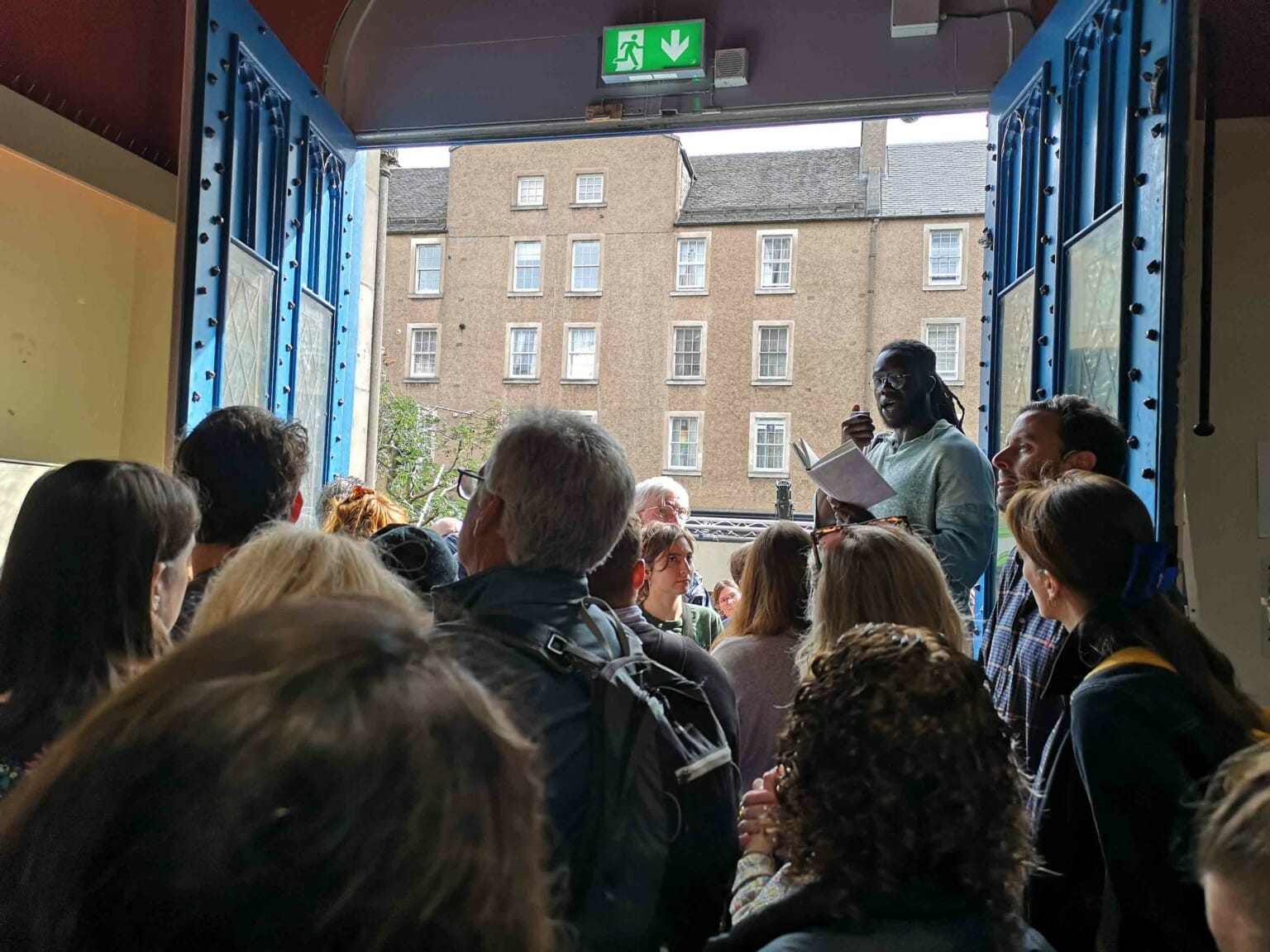 Gathering in the atrium of Nicolson Street Church
Gathering in the atrium of Nicolson Street Church
10. Funeral
Ontroerend Goed
ZOO Southside
After some rejigging of trains, around the day’s rail strike, I knew I had to be at Waverley Station for 11:45. So maybe I was cutting it fine to book at 10am show, close to a mile away. But I couldn’t resist.
We gathered at the deconsecrated Nicolson Street Church (now a community centre). Squeezed into the atrium, our Belgian hosts taught us a mournful song about remembering things we want to forget, and forgetting the things we want to remember. The words seemed foreign but strangely familiar. I later learned their language was Esperanto.

Then we entered the main hall, a cleansing hand towel given to us as we processed. On the way we were invited to contribute the names of those we had lost and wanted to remember.
In almost darkness, a sheer curtain formed a vertical inner wall, a few feet from the stone one. We shook the hands of each of those who had entered before us, and took our place in the perimeter line that welcomed those who came after us.
We passed cut logs, from person to person, using them as seats once everyone had one.
Through the thin black curtain, illuminated by tungsten bulbs, we watched a woman celebrant, celebrate an anonymous life, through a collection of the everyday objects they’d left behind, on a box placed atop a stone pillar: a polaroid camera, a music box, keys – some to locks they knew, others long forgotten.
Then concentric circle of confetti were gently sprinkled around that stone pillar and we were invited, one-by-one, to process and scatter a handful of confetti onto that altar.
The floor was smothered so, when the stone was tipped onto a series of ropes. It left a hole where it once stood.
As the performers took the weight of the stone, through the ropes, we gently sang our song and the stone was removed.
We were invited to pile our logs into a pyre, gently lit by those tungsten bulbs, with a single candle lit in a glass bowl to one side.
Names were read and tears were shed as each bulb was unscrewed.
A second bowl was placed, inverted on the first, and as the oxygen ran out the flame flickered and died, returning us to darkness.
We shuffled out and into the cafe/bar. As we were each handed a cup and saucer, I made my excuses and slipped back into the light to make the run for the train and my life away from the Fringe.
More brilliant shows…
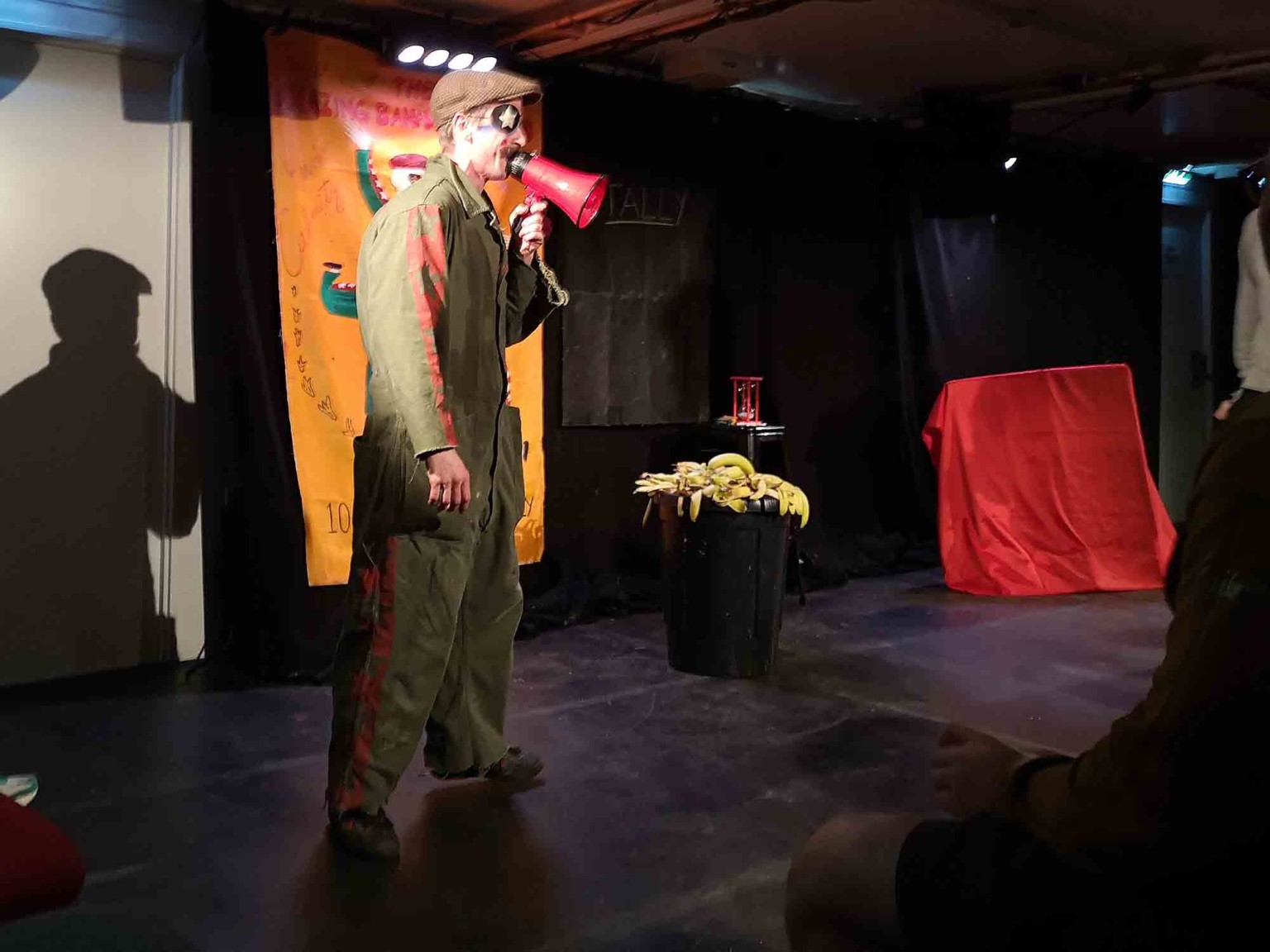 Bill O'Neill in The Amazing Banana Brothers
Bill O'Neill in The Amazing Banana Brothers
 Ivo Graham in Graham in the Green
Ivo Graham in Graham in the Green
 Jenny Sealey and her ‘terp’ in Self Raising
Jenny Sealey and her ‘terp’ in Self Raising
 Kiell Smith-Bynoe and Ed MacArthur in String v Spitta
Kiell Smith-Bynoe and Ed MacArthur in String v Spitta
11. The Amazing Banana Brothers was wonderful, high energy silliness. Directed by the amazing Natalie Palamides, I very much enjoyed the way the show pushed us all to the edge of what is funny. I’ll definitely be on the look out for more Bill O’Neill shows in the future.
12. Graham in the Green. Ivo Graham’s fast paced poem, was even more impressive because I sat beside Alex Edelman and we marvelled as Ivo edited his script long after he should have taken the stage. A deeply personal story, he could barely bring himself to look at the audience.
13. Jenny Sealey (artistic director of Graeae) was meant to be staging the book Flour Babies. But the more she worked, the more she spotted parallels and uncovered secrets in her life. She reworked the show as Self Raising, the often heart-breaking story of life as a deaf woman.
14. String v Spitta could be a very silly concept but for stand-out performances from Kiell Smith-Bynoe and Ed MacArthur. Two children’s entertainers cross the class barriers between West and East London, and double-cross each other as they go. Surprisingly engaging fun.
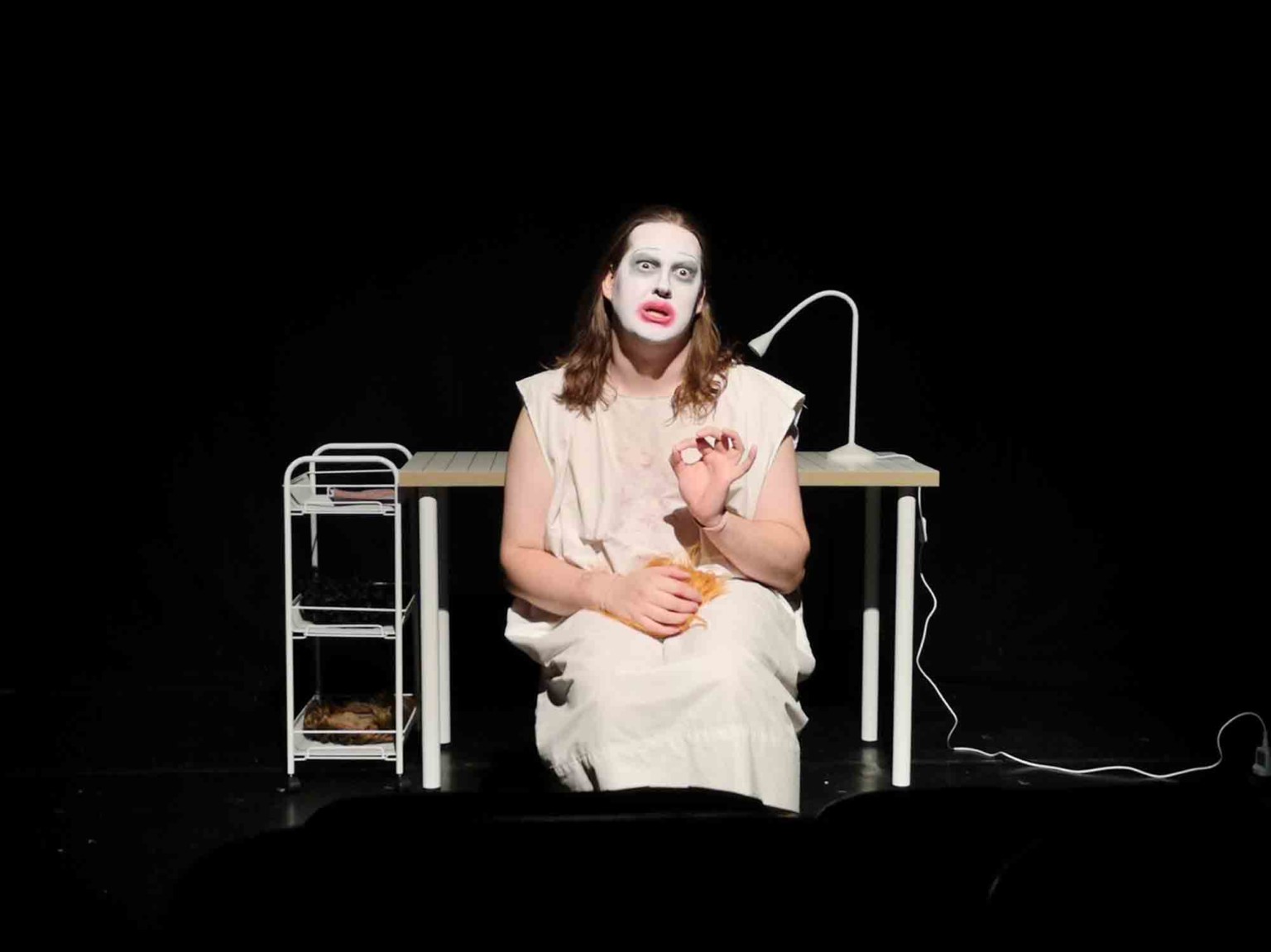 Ginava in Split Lip
Ginava in Split Lip
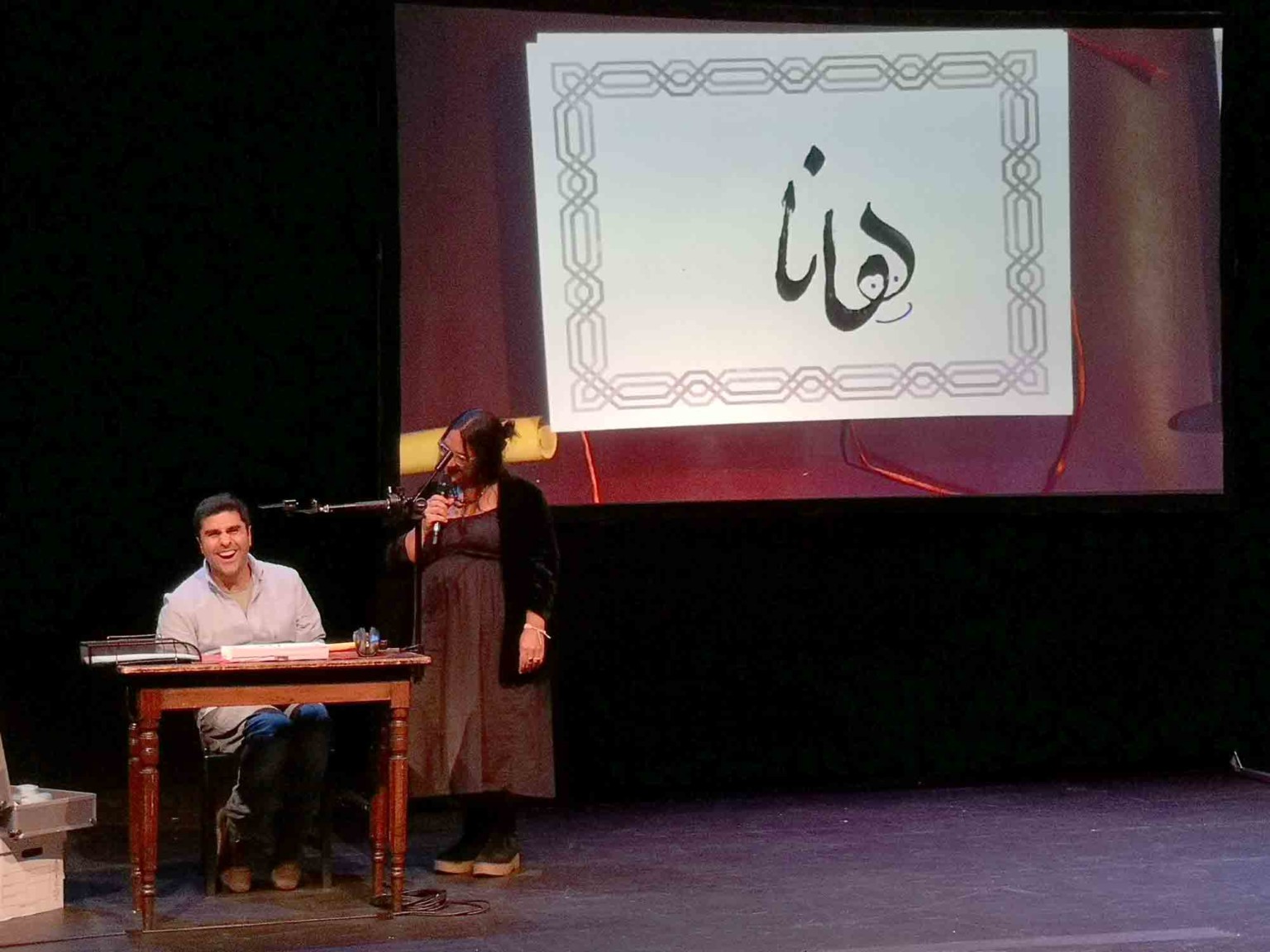 Nassim Soleimanpour and Hannah Lavery in Nassim
Nassim Soleimanpour and Hannah Lavery in Nassim
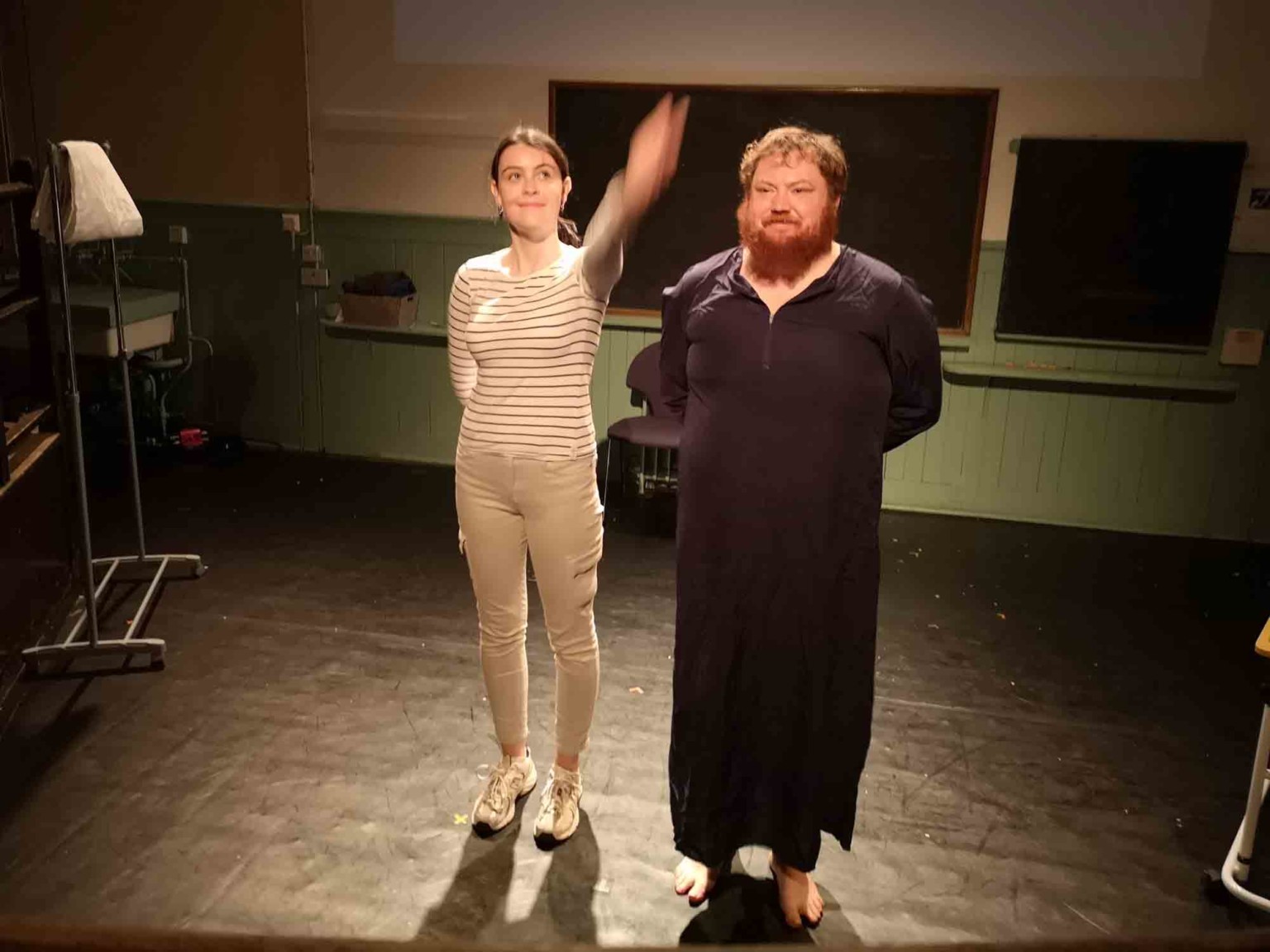 Evie Leonard and Matthew Barker in The Fish Bowl
Evie Leonard and Matthew Barker in The Fish Bowl
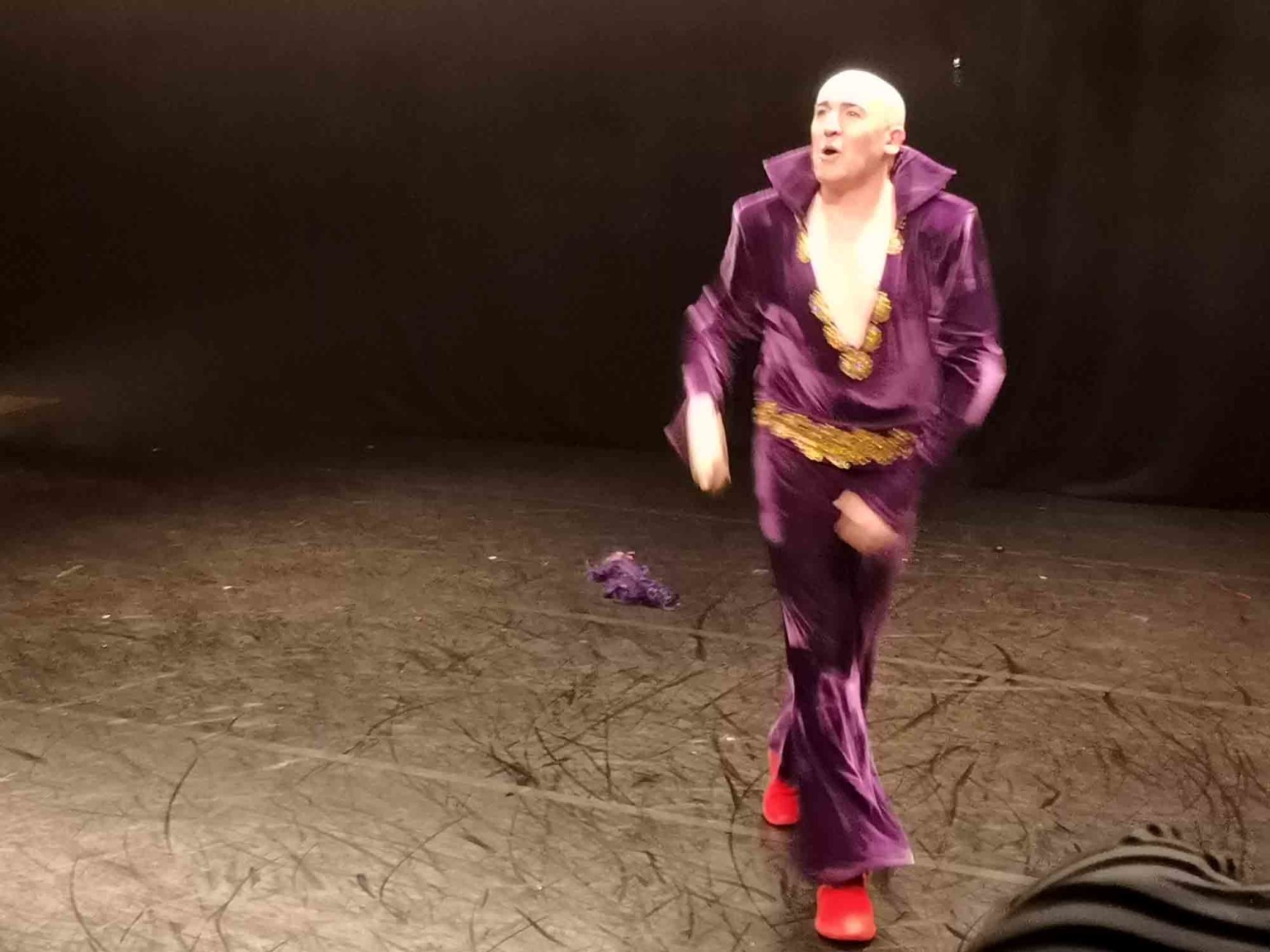 Pat Kinevane in KING.
Pat Kinevane in KING.
15. Ginava is usually a drag artist. Split Lip is their first solo show. A late booking for me and a really good one. The story of a psychiatric patient, told entirely through lip-synched clips from TV and films. A tough and challenging work, brilliantly executed. I loved it.
16. Nassim is a a beautifully crafted show. The playwright begins backstage using projected cards to communicate with a new actor each time (Hannah Lavery in our case). It’s the story of losing and regaining the language that connects him to his Iranian mum. Just lovely.
17. Set in a dementia care home in Australia, The Fish Bowl tells the stories of the residents, and asks us to question how we care for those who are unable to help themselves. It was a sometimes uncomfortable and often heart-warming show, told by the carers.
18. KING is a one-man show about a man whose trauma keeps him trapped in his home, apart from when visiting his dying father and secret work as an Elvis impersonator. Incredibly moving, brilliantly acted and enhanced with minimal staging and colour palette.
 David Threlfall and Tim Crouch in An Oak Tree
David Threlfall and Tim Crouch in An Oak Tree
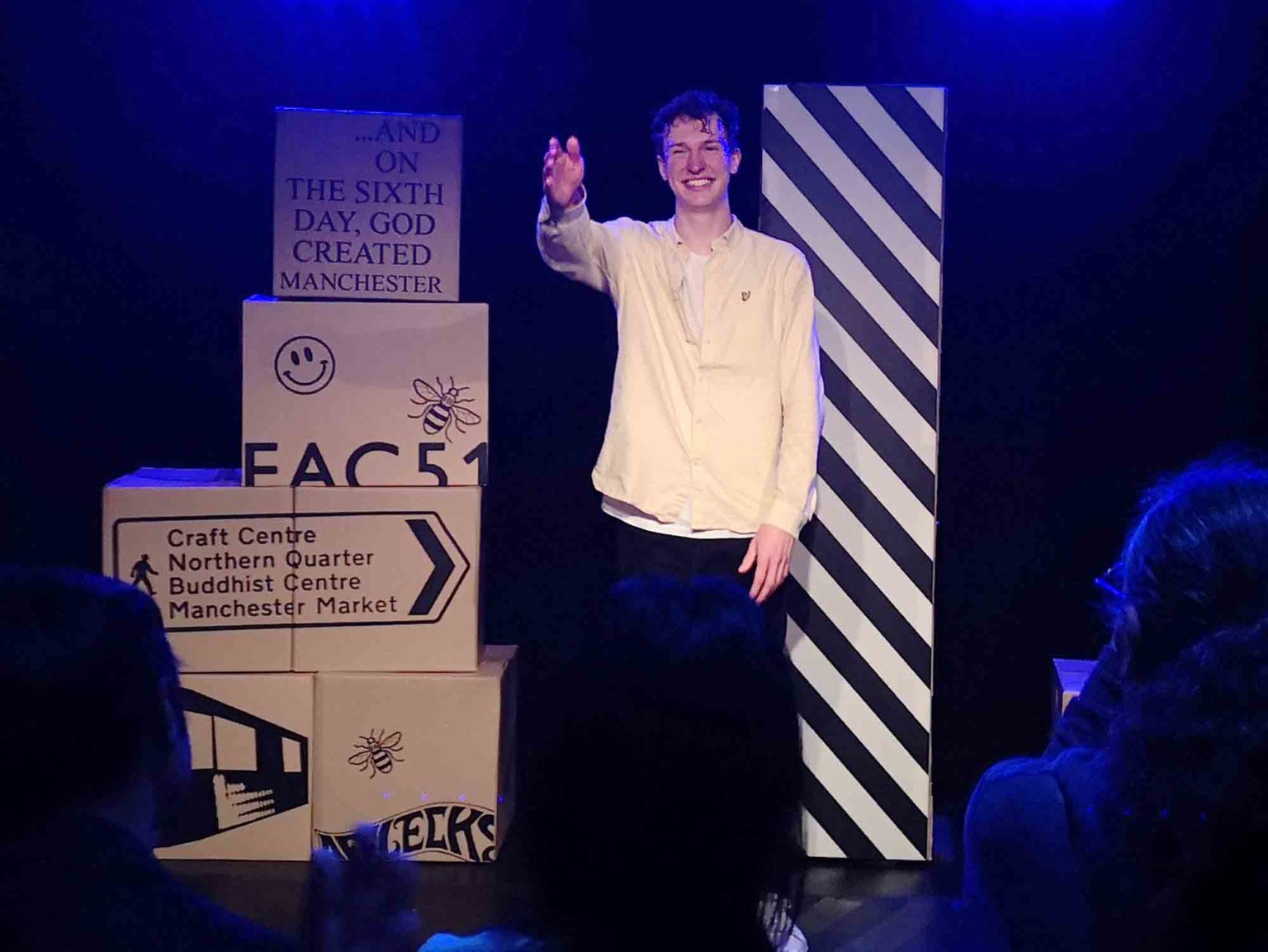 Tom Claxton in A Manchester Anthem
Tom Claxton in A Manchester Anthem
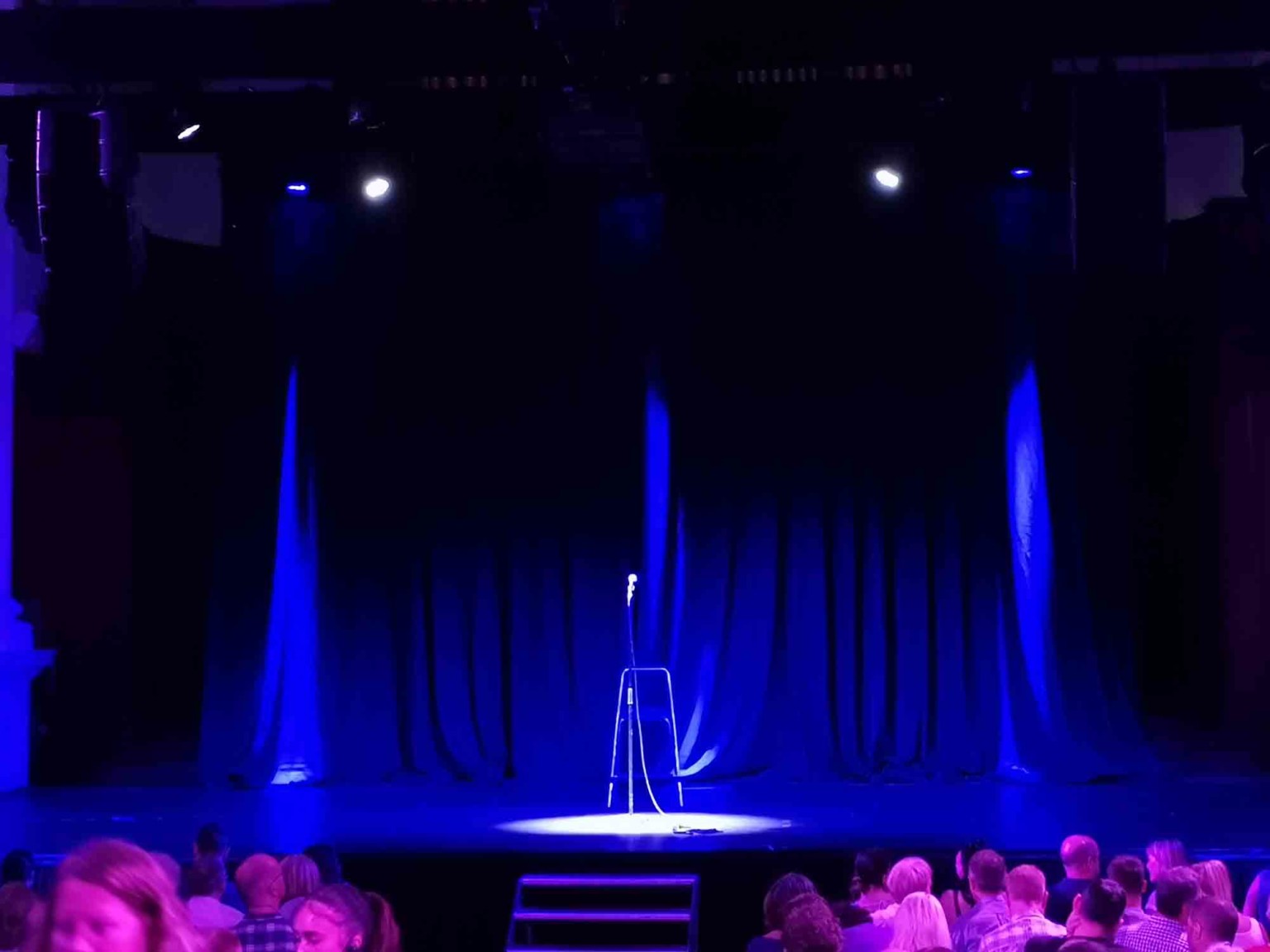 The spotlight and stool, waiting for Stewart Lee's Basic Lee
The spotlight and stool, waiting for Stewart Lee's Basic Lee
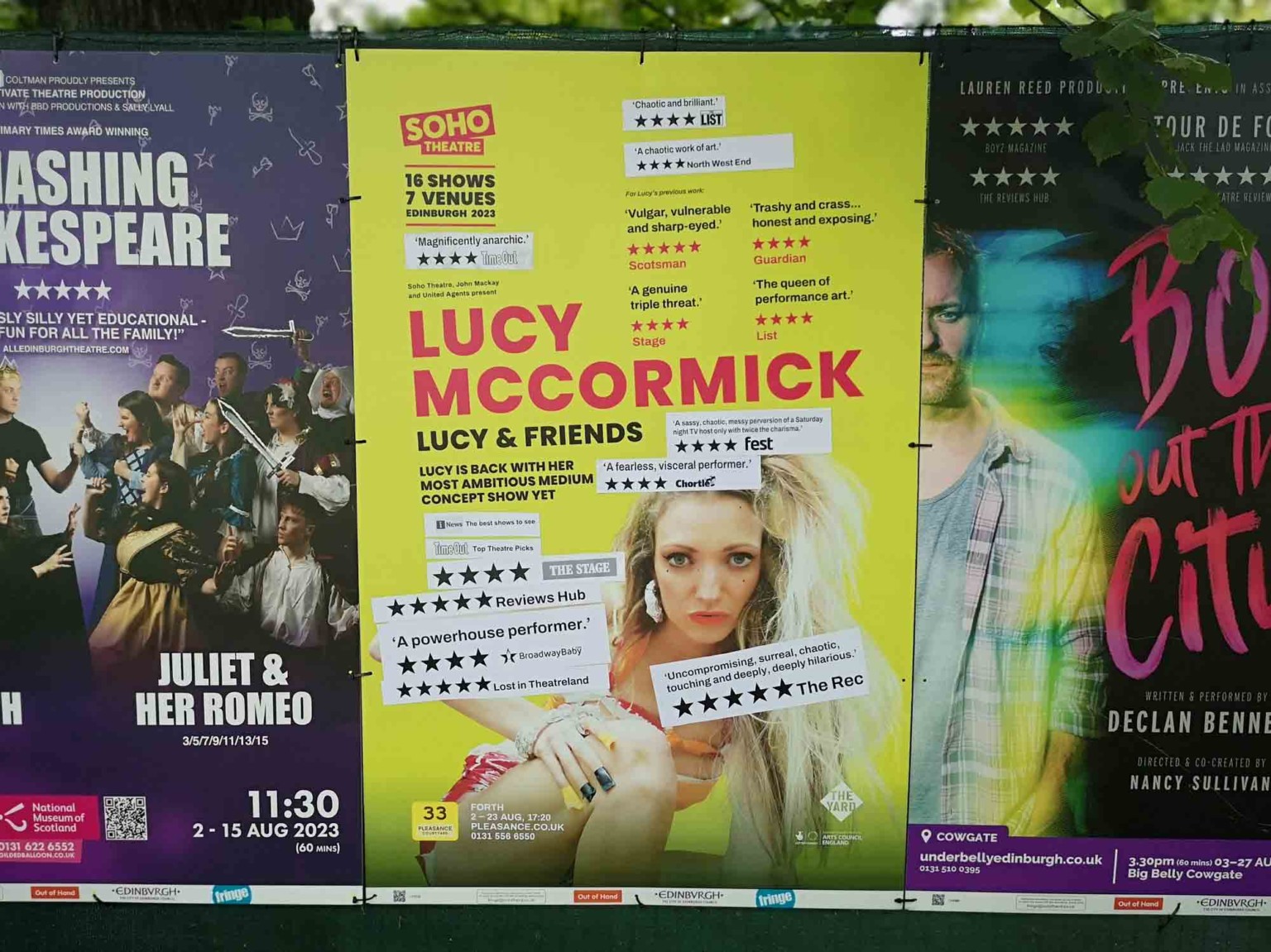 Poster for Lucy & Friends
Poster for Lucy & Friends
19. I’ve seen An Oak Tree several times in its eighteen years. Alongside writer Tim Crouch, David Threlfall was our guest actor (who’d not read or seen the play). He brilliantly brought an extra dimension as the father whose daughter had been run over by a stage hypnotist.
20. From the blurb, I’d assumed that A Manchester Anthem was about the 80s house scene. Instead it was about the son of a raver, a boy made good on a big night out, his last before heading to Oxford. My second show on the theme, brilliantly performed by Tom Claxton.
21. My third time seeing Stewart Lee’s Basic Lee. It’s fascinating to see the show evolve and adapt to different lengths. This performance started and ended oddly. A row with a phone-fiddling D/deaf man, and a curtailed end after someone walked out. But it was still very funny.
22. Lucy McCormick dressed as a tree, then as a ghost (pouring red wine through her sheet), acted as a sex therapist (holding her white-board marker in an unusual place) and ended in a topless singalong, before asking us to help her clear up. Lucy & Friends was brilliant.
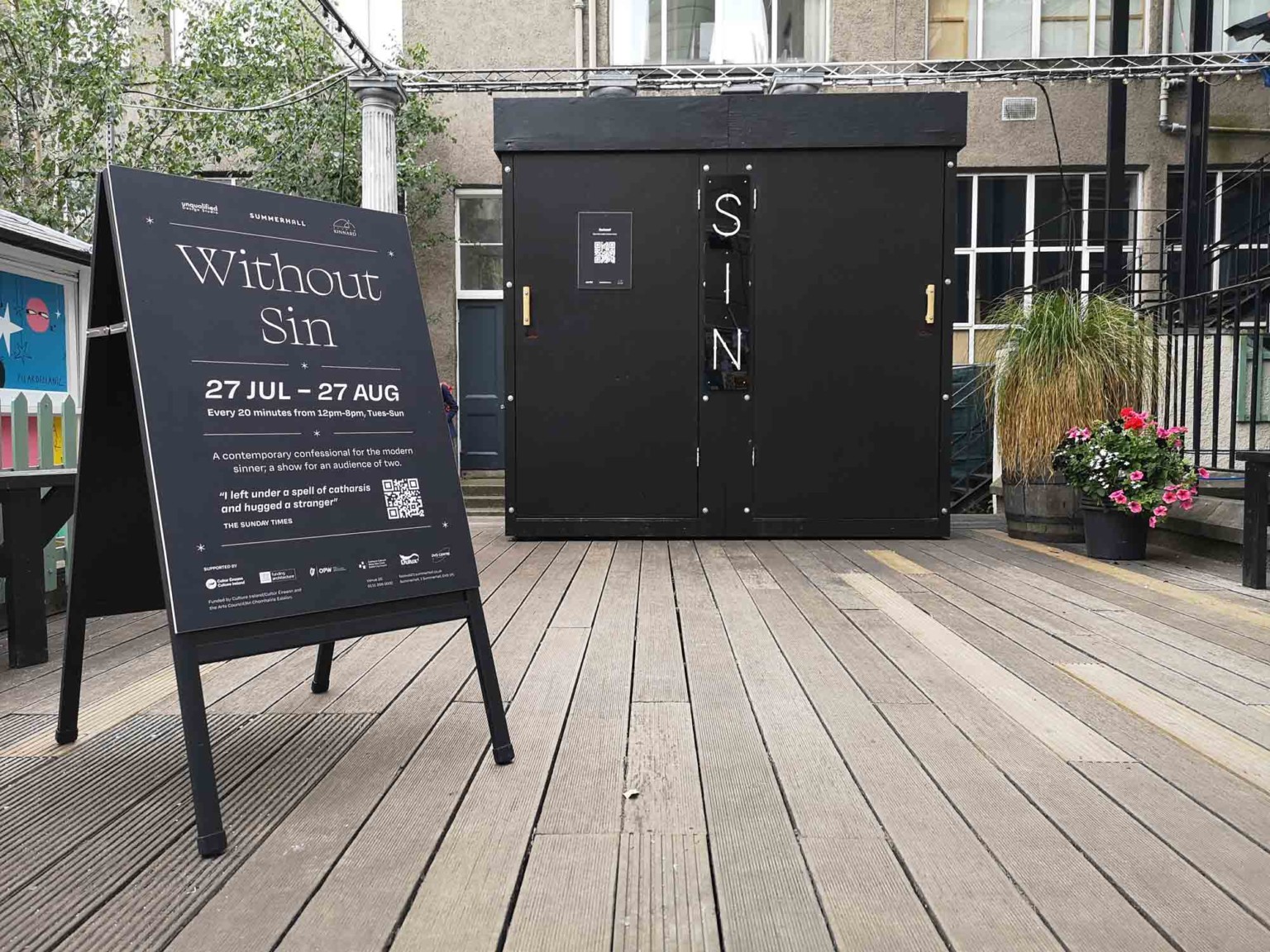 The confessional booth for Without Sin
The confessional booth for Without Sin
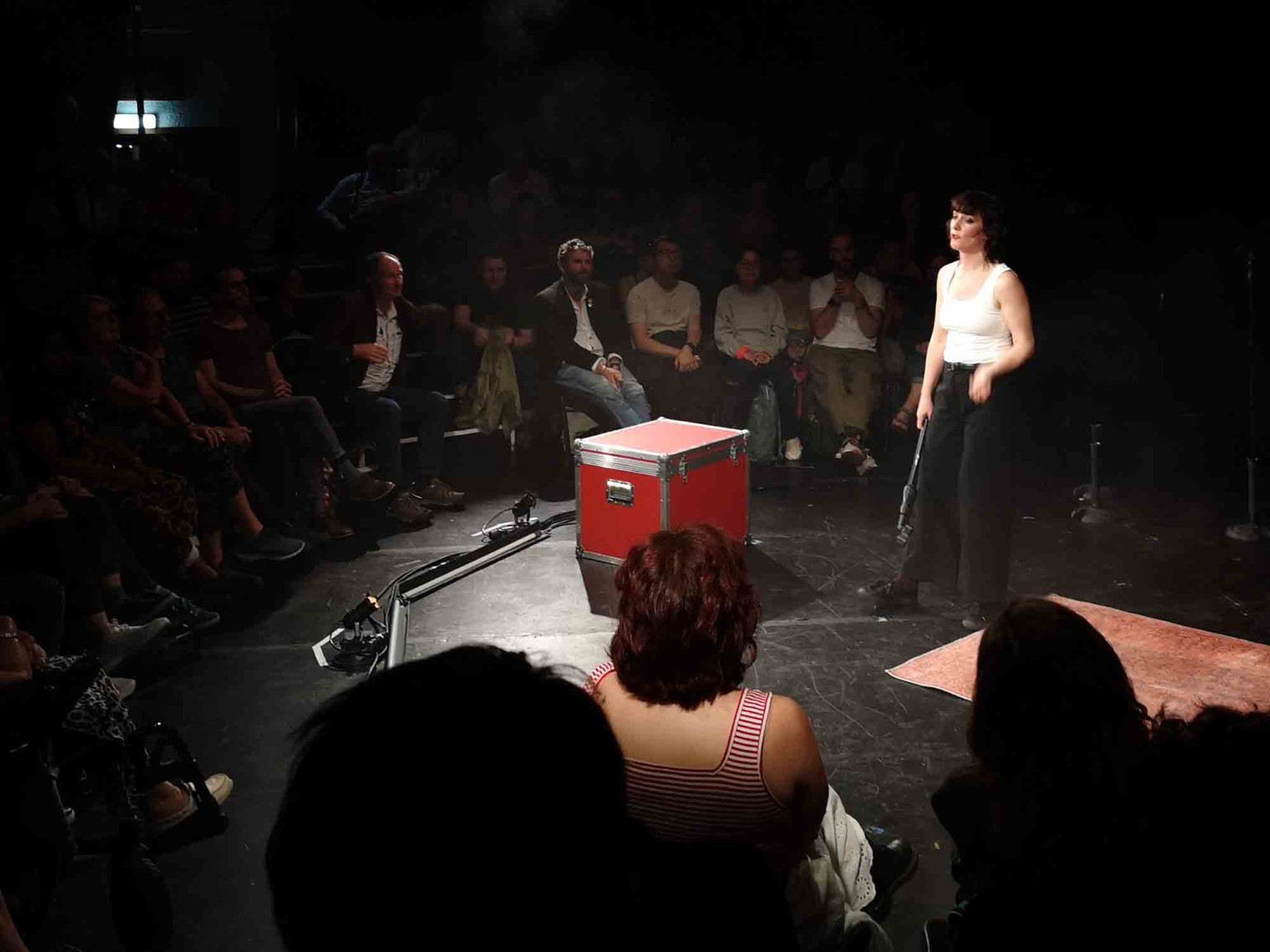 Deb Pugh in Beautiful Evil Things
Deb Pugh in Beautiful Evil Things
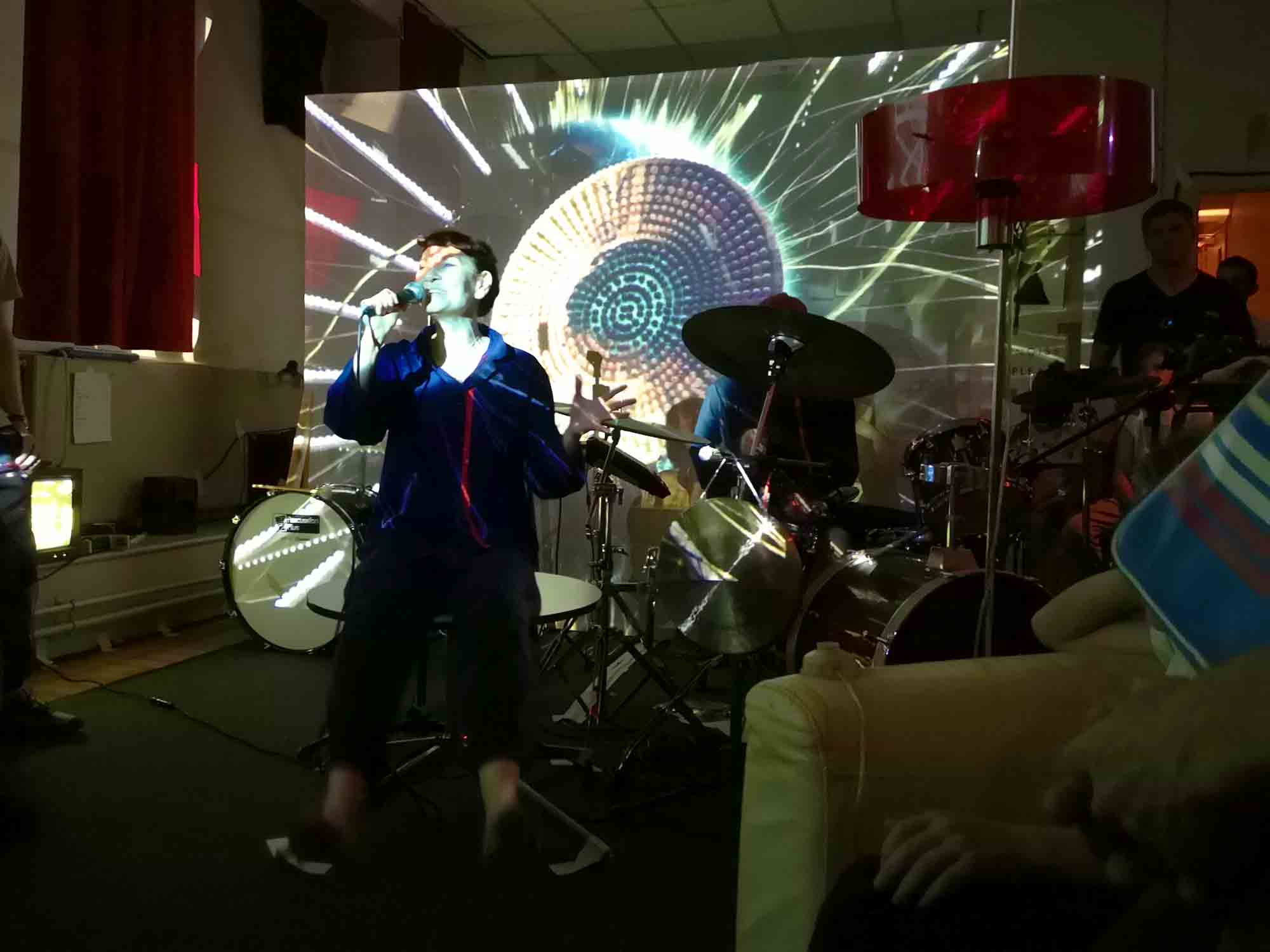 Performers from Klanghaus: In Haus
Performers from Klanghaus: In Haus
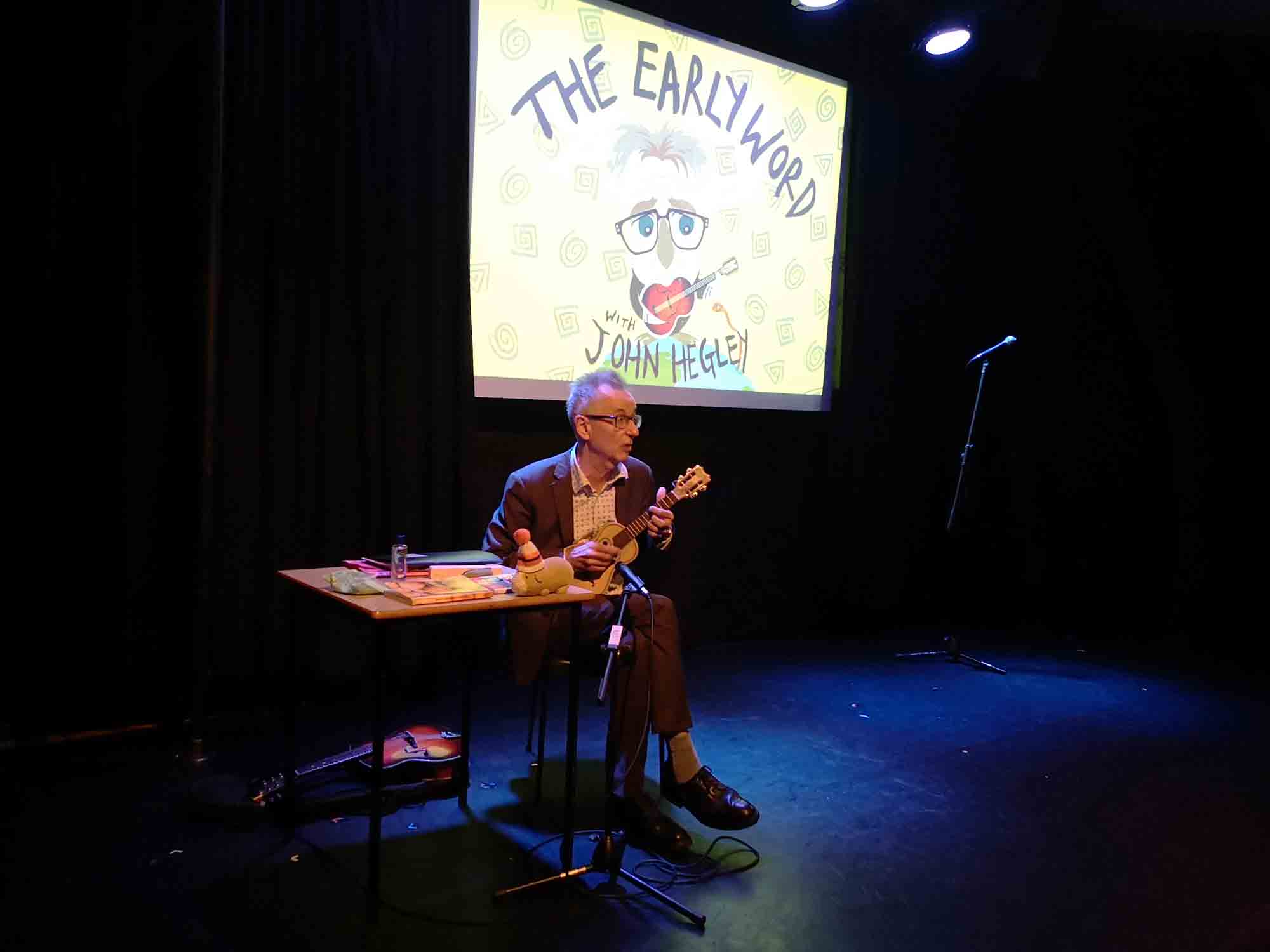 John Hegley in The Early Word
John Hegley in The Early Word
23. Without Sin was a beautifully simple idea. Two people separated in a confession booth. With a mic, headphones and a series of prompts, within 15 minutes we each knew more about the other than we had ever told our friends. We left, hugged and will never speak again.
24. Beautiful Evil Things is an incredible one woman sprint through the story of Medusa, her sisters, the Trojan war and many related Greek myths. Expertly staged and paced, and wonderfully performed by Deb Pugh.
25. In a squat style room, filled with arty bric-a-brac, I found the Klanghaus: In Haus performance installation. We were invited to sit, stand or move about the space while musicians played sometimes very loud music. Sometimes incredible, occasionally a little awkward.
26. I first saw John Hegley at my first Fringe, in 1990. It was lovely to get a chance to see him again for The Early Word, a hug of a show using wordplay and gentle humour to welcome the day. Plus some sing-a-longs with actions and handouts – ‘all hail the snail’. And all hail John Hegley.
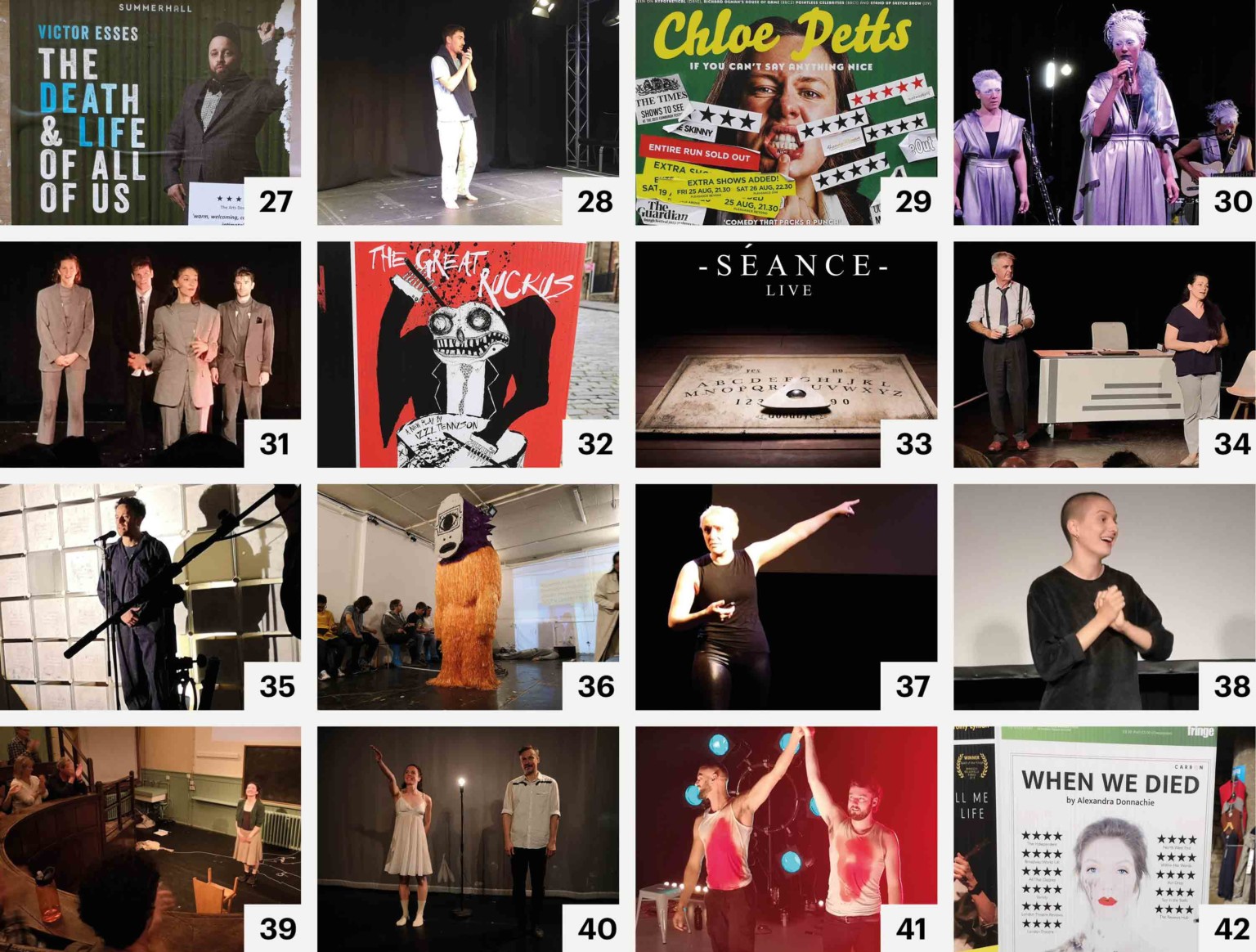
27. The Death & Life of All of Us was an interestingly staged tale from Victor Esses about his family’s secrets.
28. Australian Jack Twelvetree’s first Fringe show was The Stall. Yet another show featuring a father’s suicide, via a light plane metaphor.
29. The ‘six foot angry lesbian’ Chloe Petts was too jolly to maintain their angry persona for long, in If You Can’t Say Anything Nice.
30. At the French Institute, Cyborg Experiment #1 was a properly weird performance/installation, questioning future interactions.
31. The Man Who Thought He Knew Too Much Clever mime and movement in an absurd dream-like whodunnit. The sort of show I’d only ever see at the Fringe.
32. The Great Ruckus had great posters. Clever writing and well observed characters at a funeral, delivered by people who weren’t comfortable doing it.
33. Séance Live I loved the idea but the performer lacked conviction and the Fire Exit signs ruined the illusion of darkness.
34. The Appraisal felt like a show from a bygone era. Played out like a play written by a playwright for actors to act out.
35. The backstories revealed while investigating a mass grave in Argentina. Rewind was tender and smart. The subtle ending ruined by them overrunning and so many of us having to leave. Sorry.
36. What You See When Your Eyes Are Closed / What You Don’t See When Your Eyes Are Open. Bonkers interactive lecture/performance, featuring lots of great tech-based visual gags and a cyclops with a video projector in his head.
37. Party School. Chinese born stand-up Olivia Xing didn’t seem to grasp the difference between UK and US audiences. An awkward, mildly confrontational, ramble that missed the important points she was trying to make.
38. Mary Angley is so compelling in Grief Lightning: A Satire in 78 Slides that I was happy to forgive the silly premise and veracity of the argument that Grease is the coma dream of a dying Sandy.
39. As a relative newcomer to the area, Creekshow is Jenny Witzel’s reflection on the gentrification of Deptford and the layers of its history that trap discarded memories, only to resurface in future generations.
40. Blizzard was a dreamlike tale of neuroscience, Nietzsche and performance art. Emily Woof was magnetic and drew me in to what became an often silly story about some superficial first world anxieties.
41. I was sold on this show by shadow and backlight in the poster. But Insomniacs Fable turned out to be a man literally juggling with his thoughts (balls, hoops and clubs), plus some gorgeous dancing and staging.
42. Beginning as the facile staging of different death scenes and oneupmanship. Stuntman turned into a tale about the threat of male violence and the looming shadow of suicide. Bravado was replaced by support, bravo.
43. A tale of an embalmer, meeting her rapist on the slab, When We Died was never going to be a cheery play. But Alexandra Donnachie delivered it with sensitivity and style, if a little too much ‘physical theatre’ for my liking.
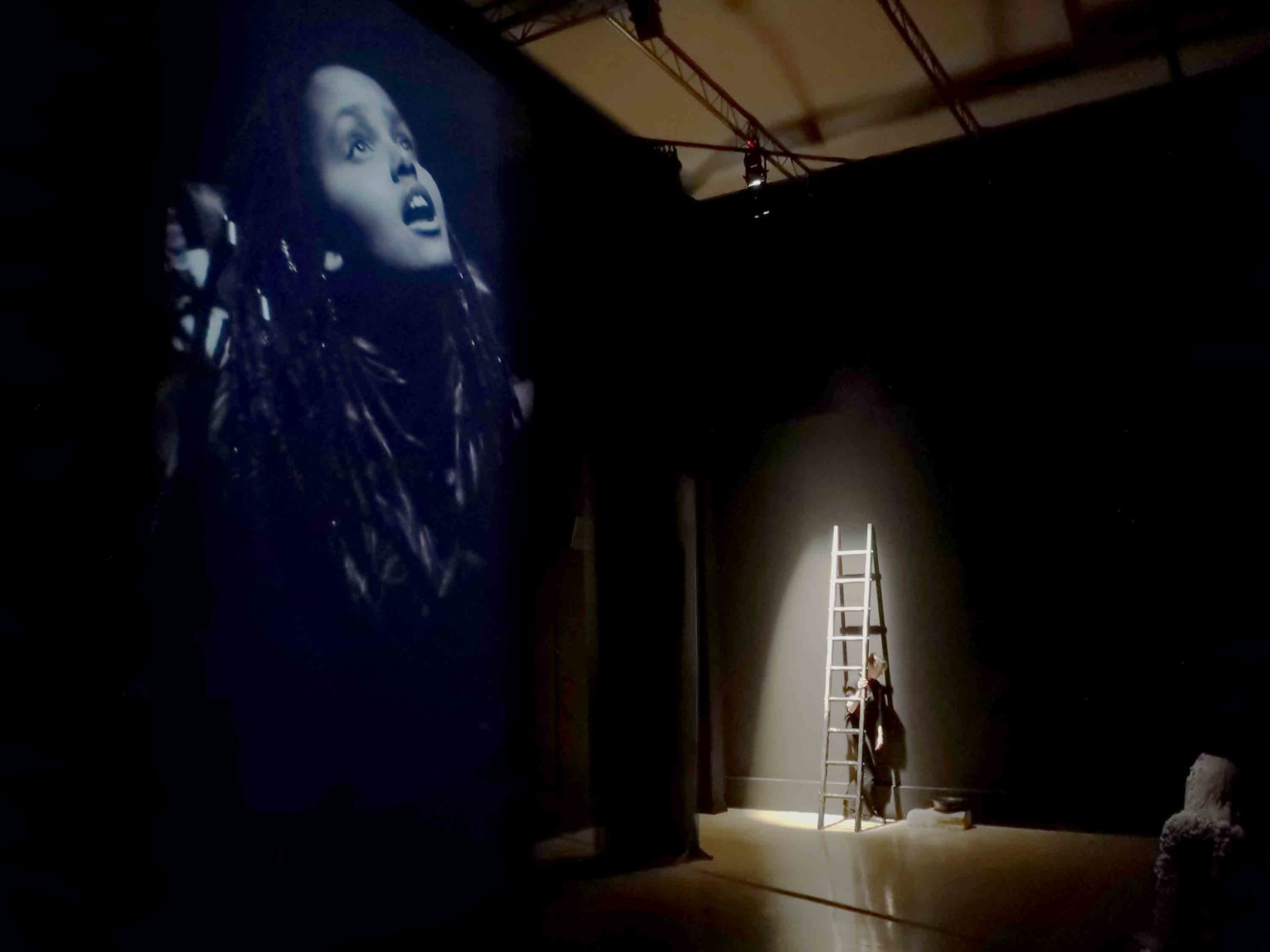 Jesse Jones’s The Tower
Jesse Jones’s The Tower
44. The Tower
Jesse Jones
Talbot Rice Gallery
In a spare moment between shows, I wandered in to this university gallery to see what was on. I was thrilled to find a new durational installation by Jesse Jones. The Tower is a companion piece to her excellent Tremble Tremble work that wowed me at the Venice Biennale. This time, Jones delves back further into Irish history, using film, installations, runes and subtle performance to evoke the times before witches.
I liked this durational work so much that I stayed well into its second cycle (of around 35 minutes) and completely missed my next show. It wasn’t really part of the Fringe but it certainly added to my Edinburgh experience.
![]()
Some final thoughts…
Edinburgh is a small city and it’s easy to walk between most venues. But a mile, against the tide of tourist traffic and overflowing bus stops can make for stressful handovers. I’ll try to leave bigger gaps next time.
It was wonderful to see the Fringe back to full strength after the ravages of COVID but its popularity once again raises the quandary of rapidly rising accommodation fees for performers and audiences.
As is often the case, certain themes recurred through the shows (or maybe my picks of the shows). Male violence was a definite thread, punctuated by the stitches of suicide, especially amongst fathers of sons.
I found the Fringe experience much more emotionally exhausting than in previous years, maybe I am getting older. It’s easy to say its like a roller-coaster but my experience was more like a stock-car ride – rapid accelerations, gear shifts, handbrake turns, starting and stopping before being unexpectedly shunted from all sides. What a ride.
I am so looking forward to my next Fringe.


